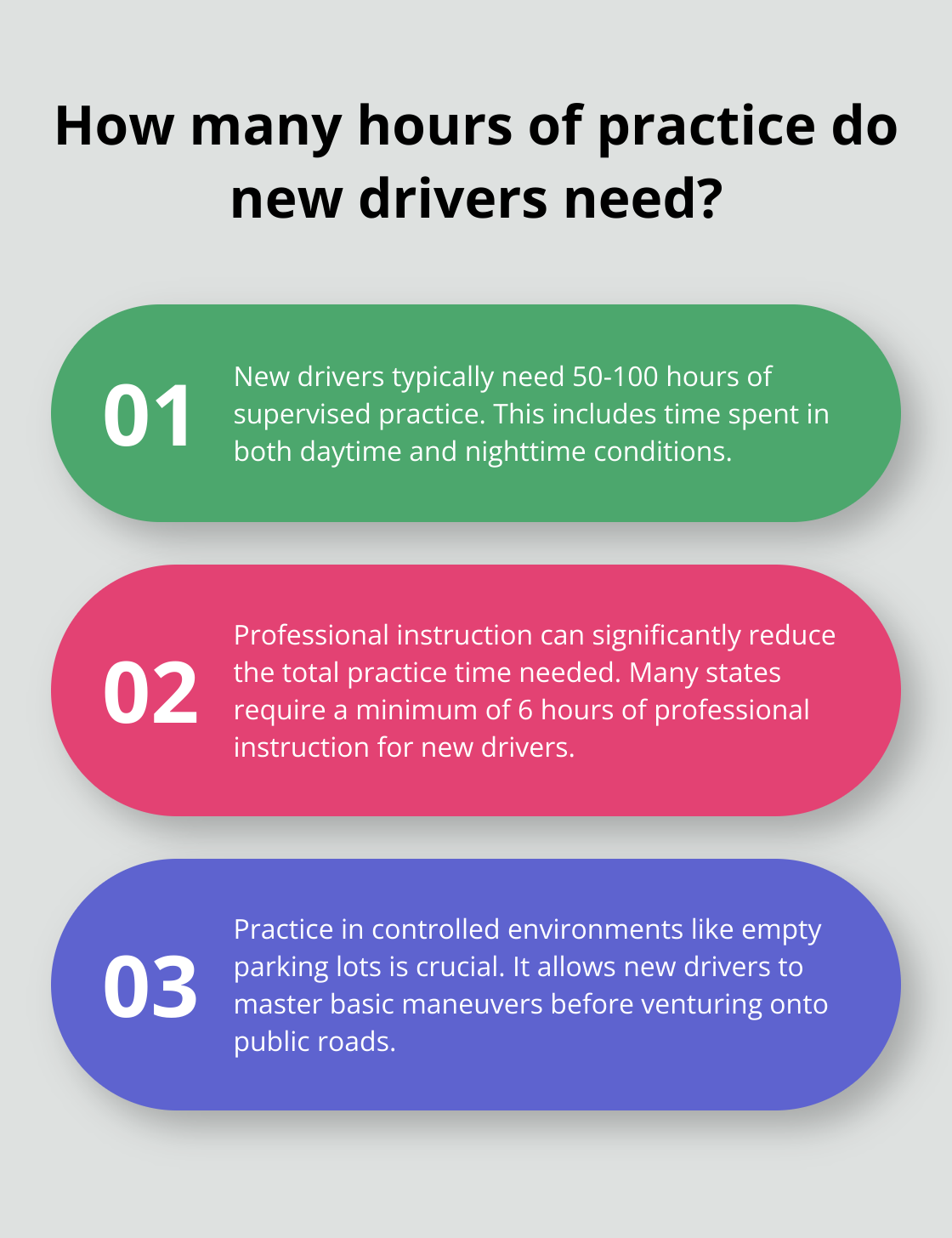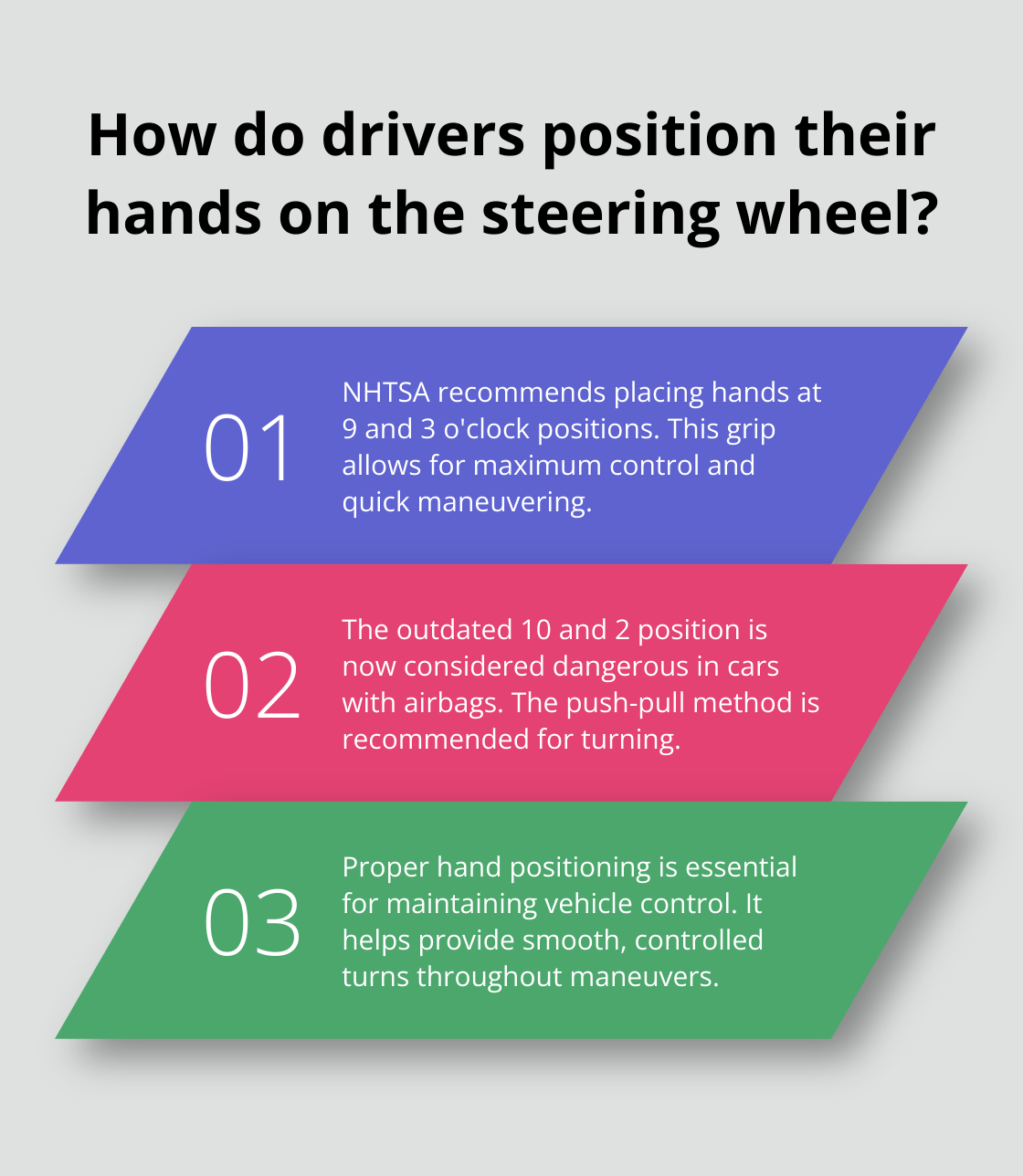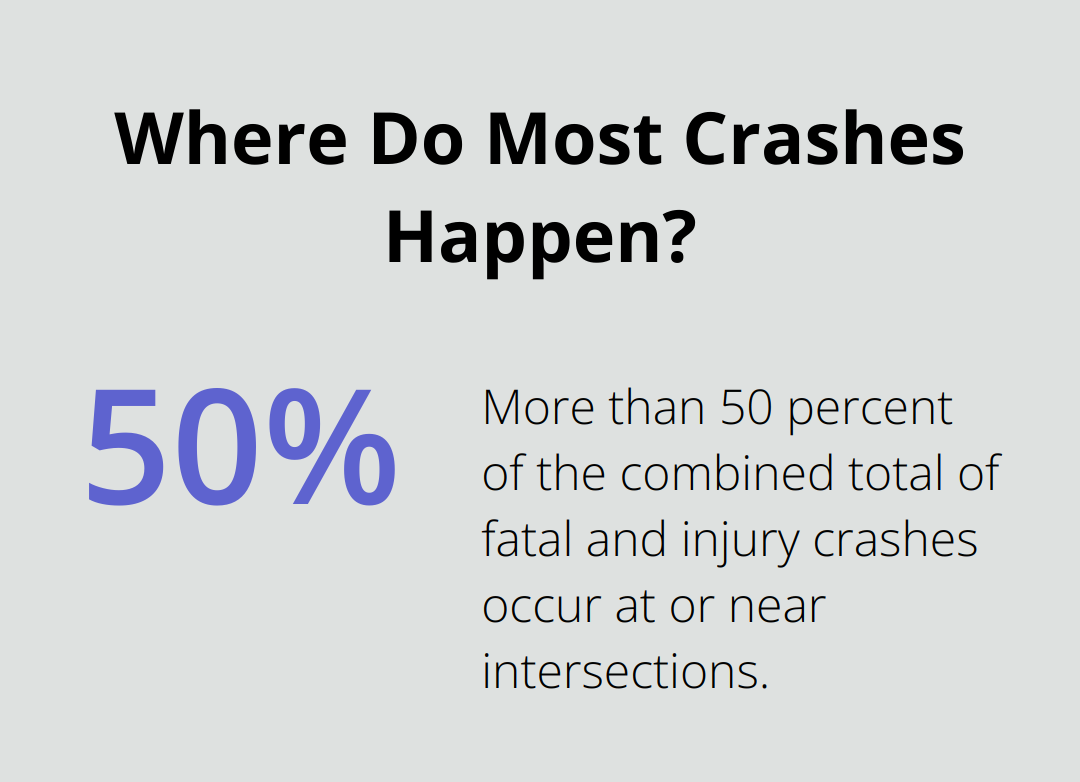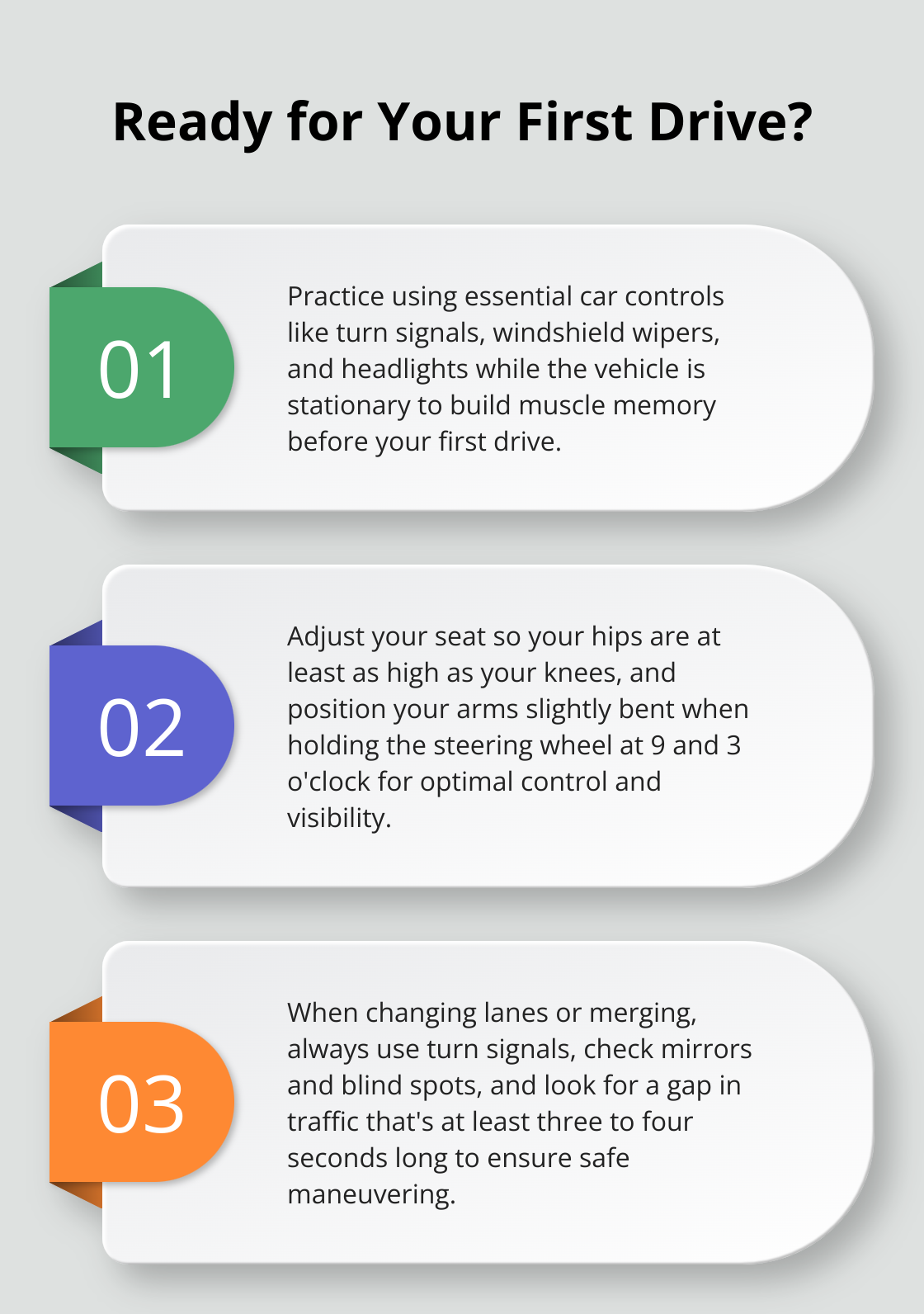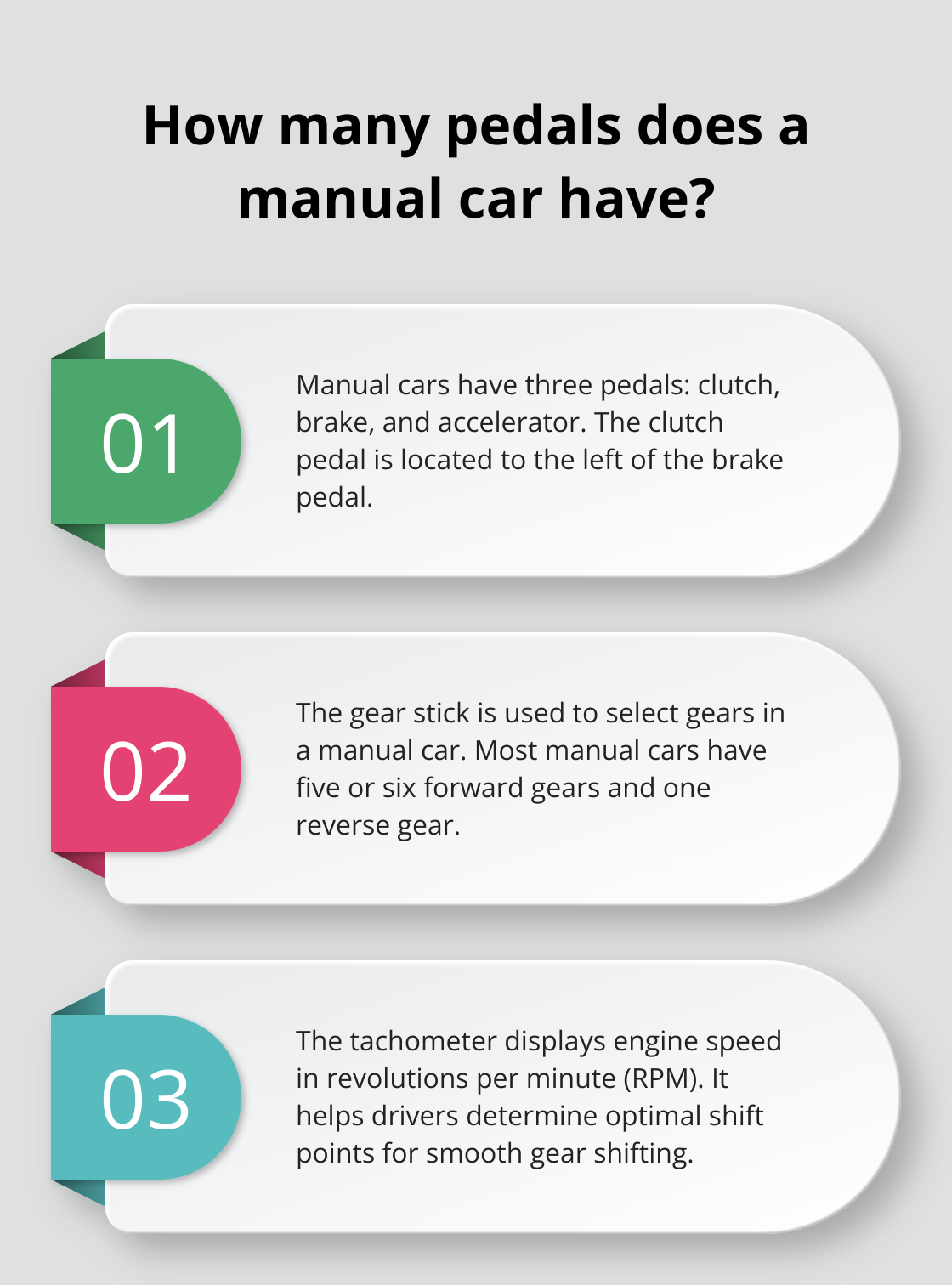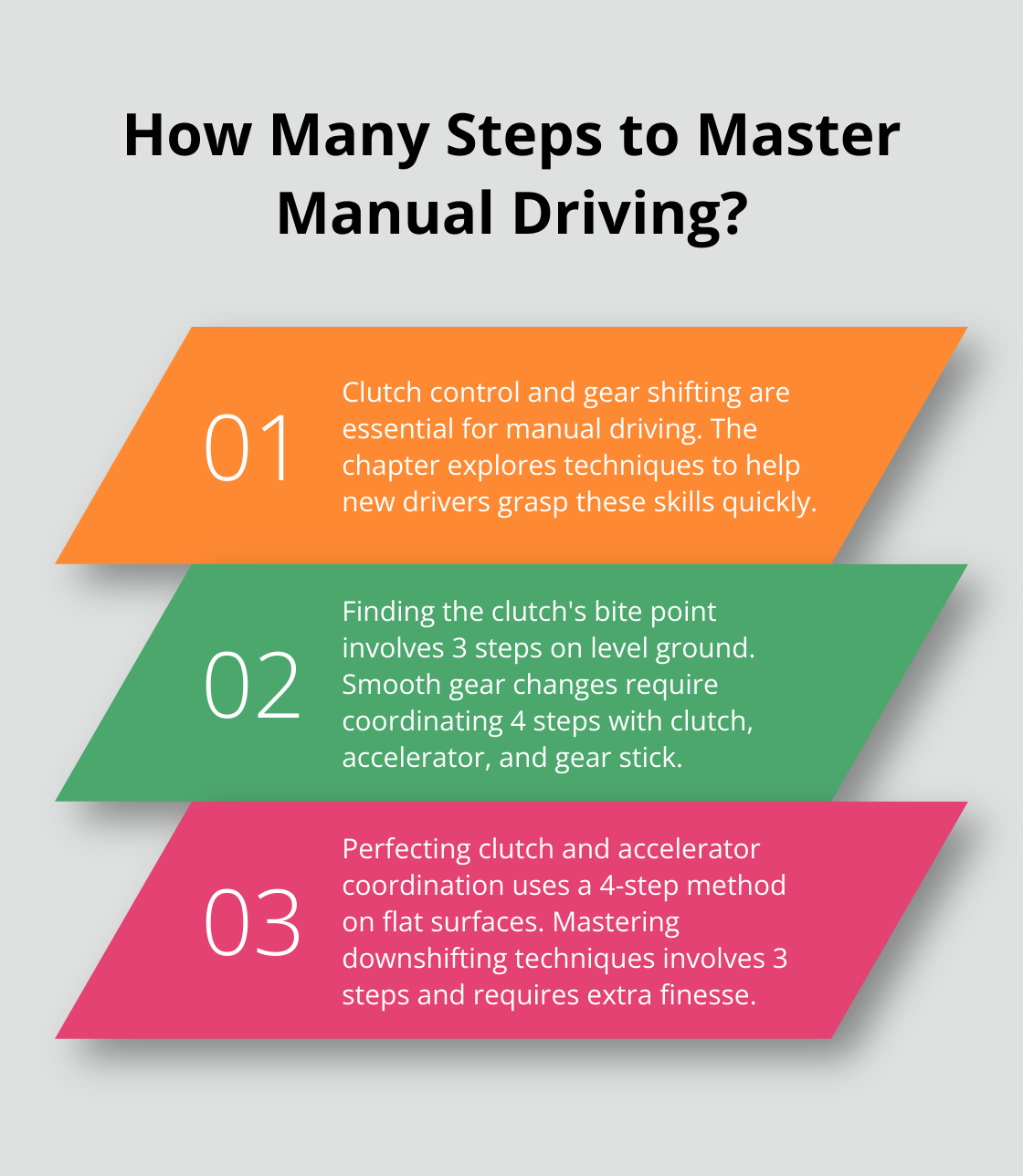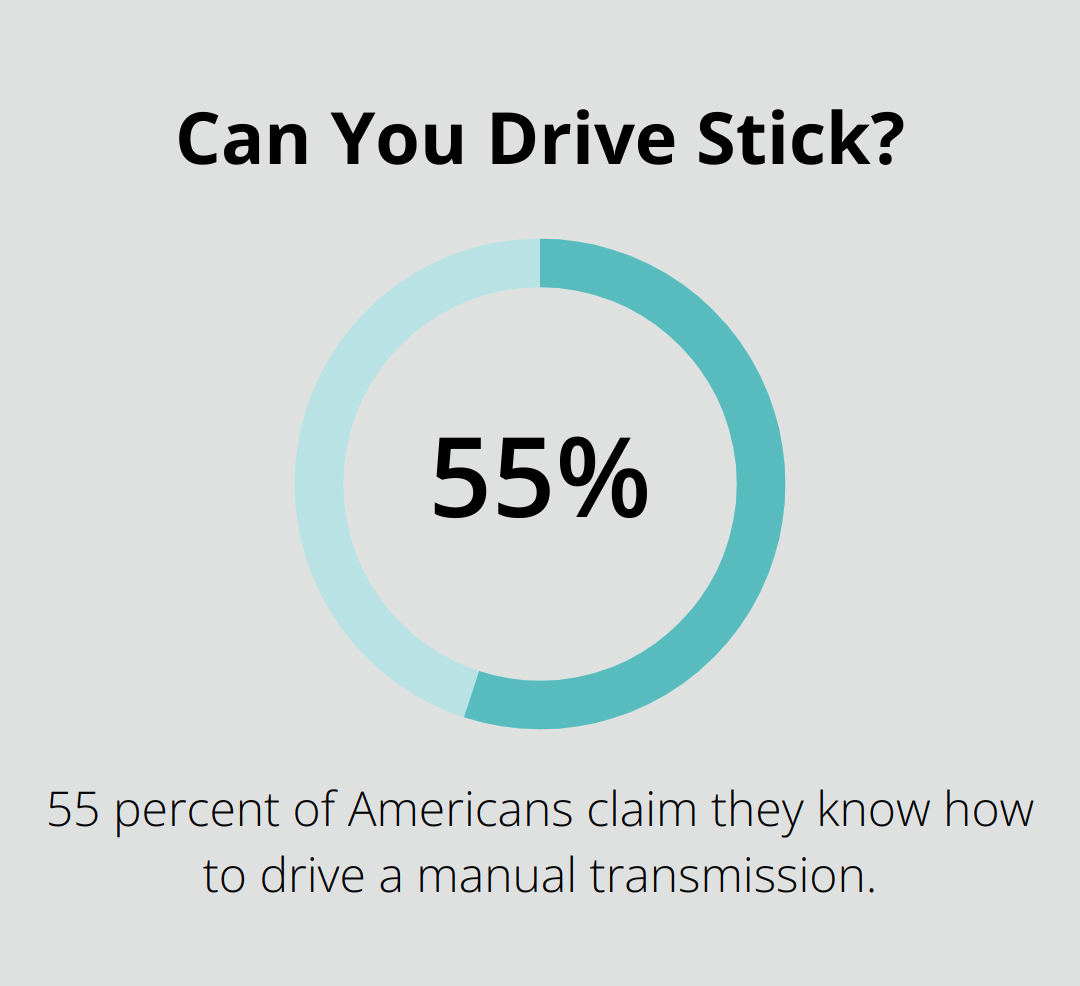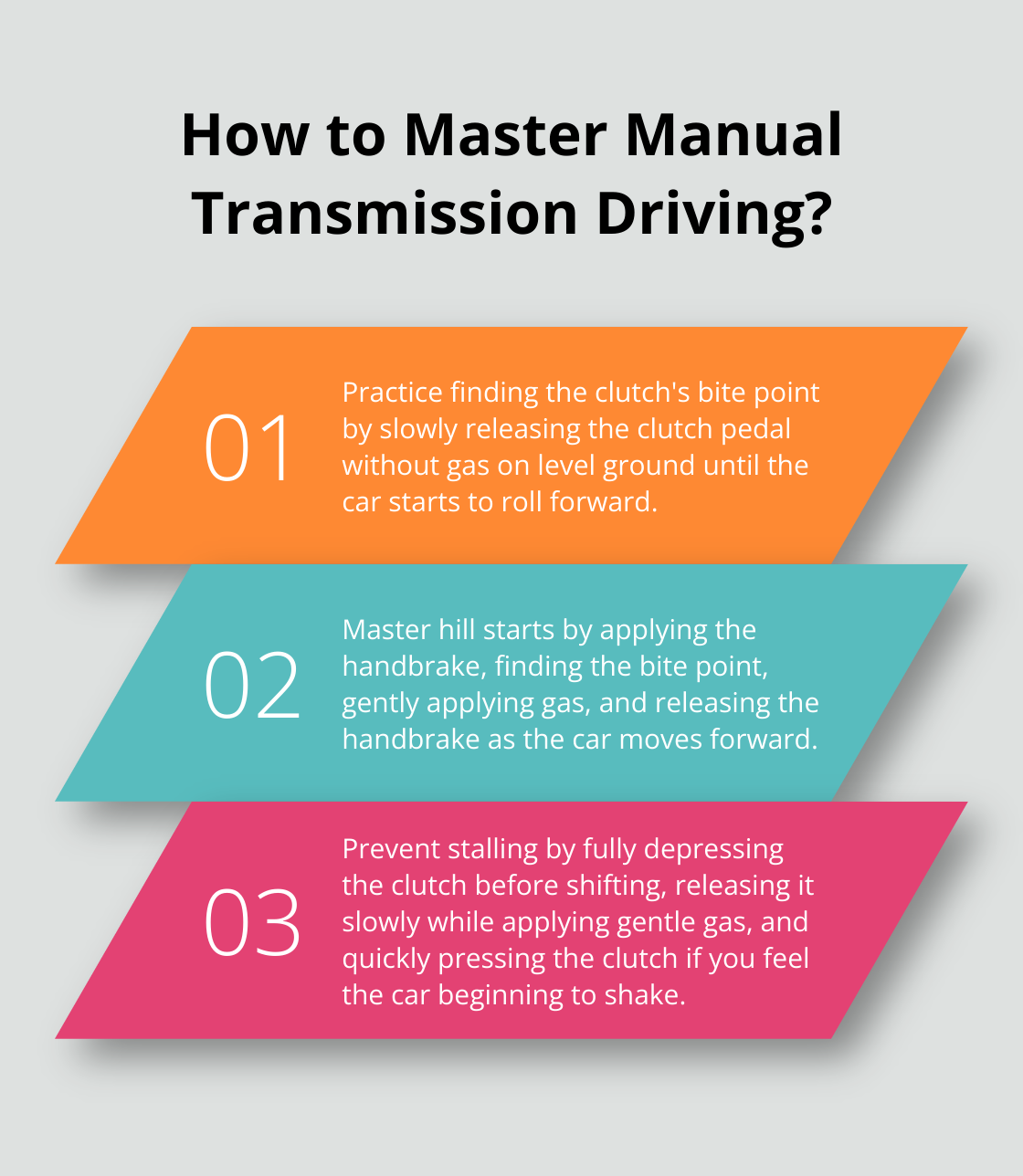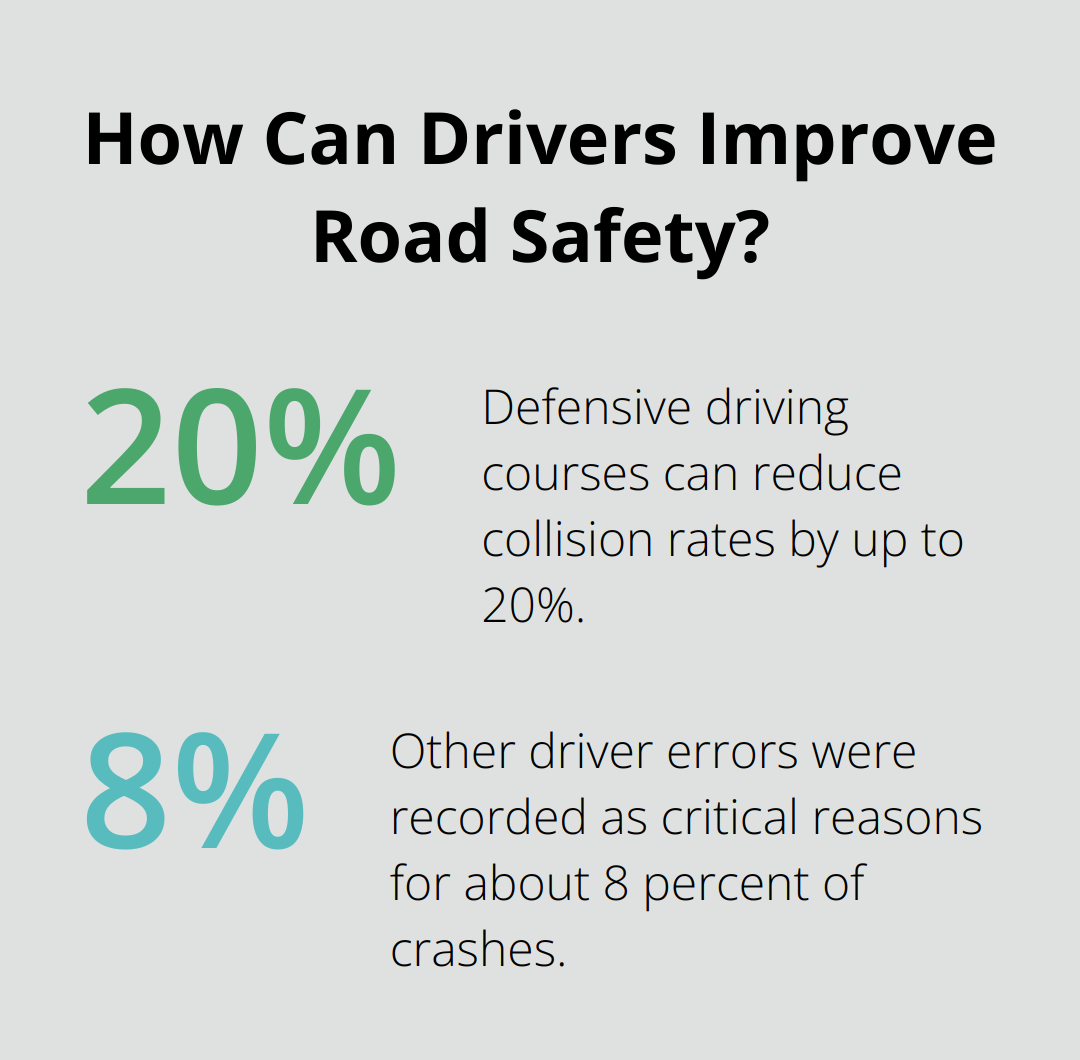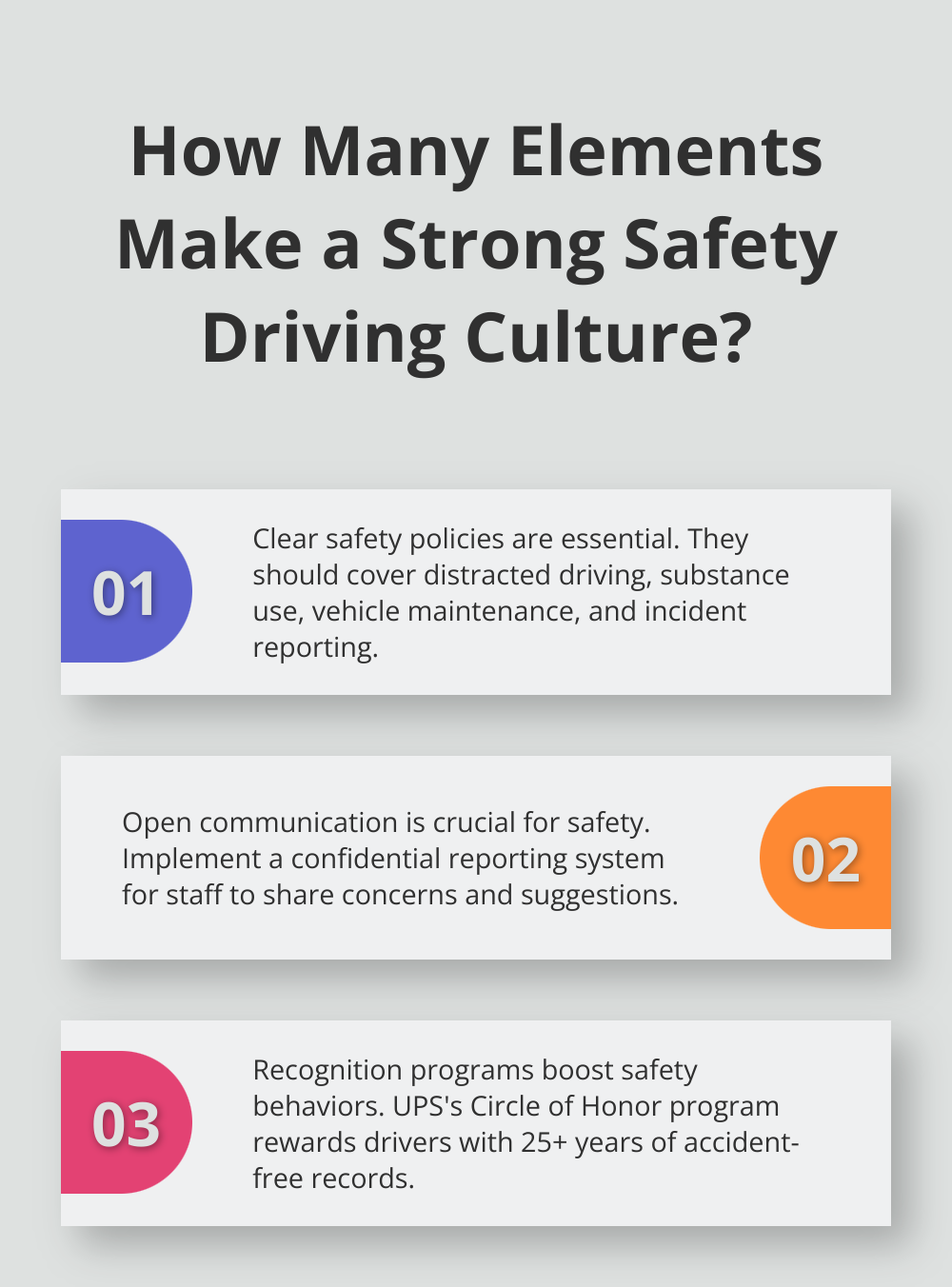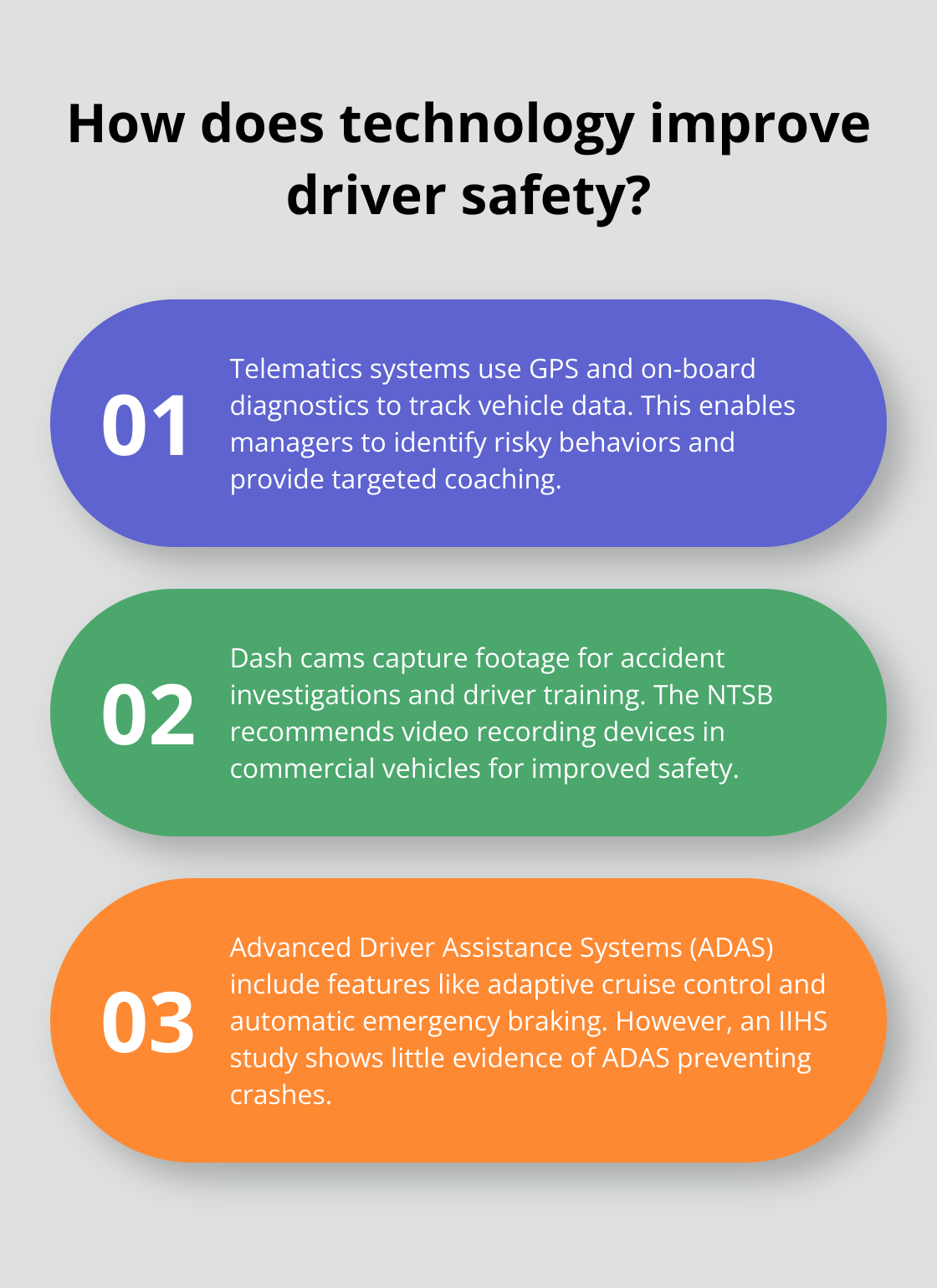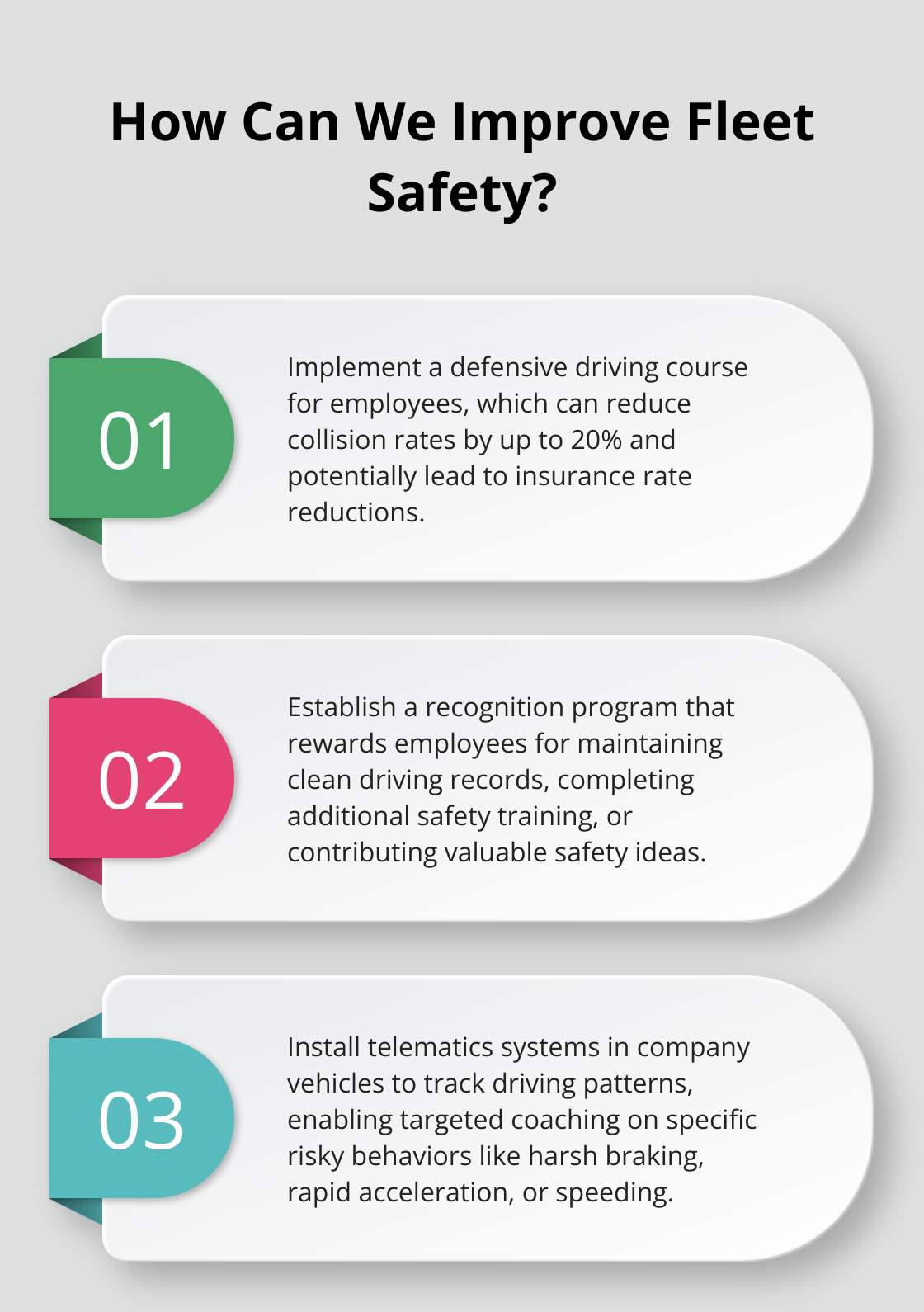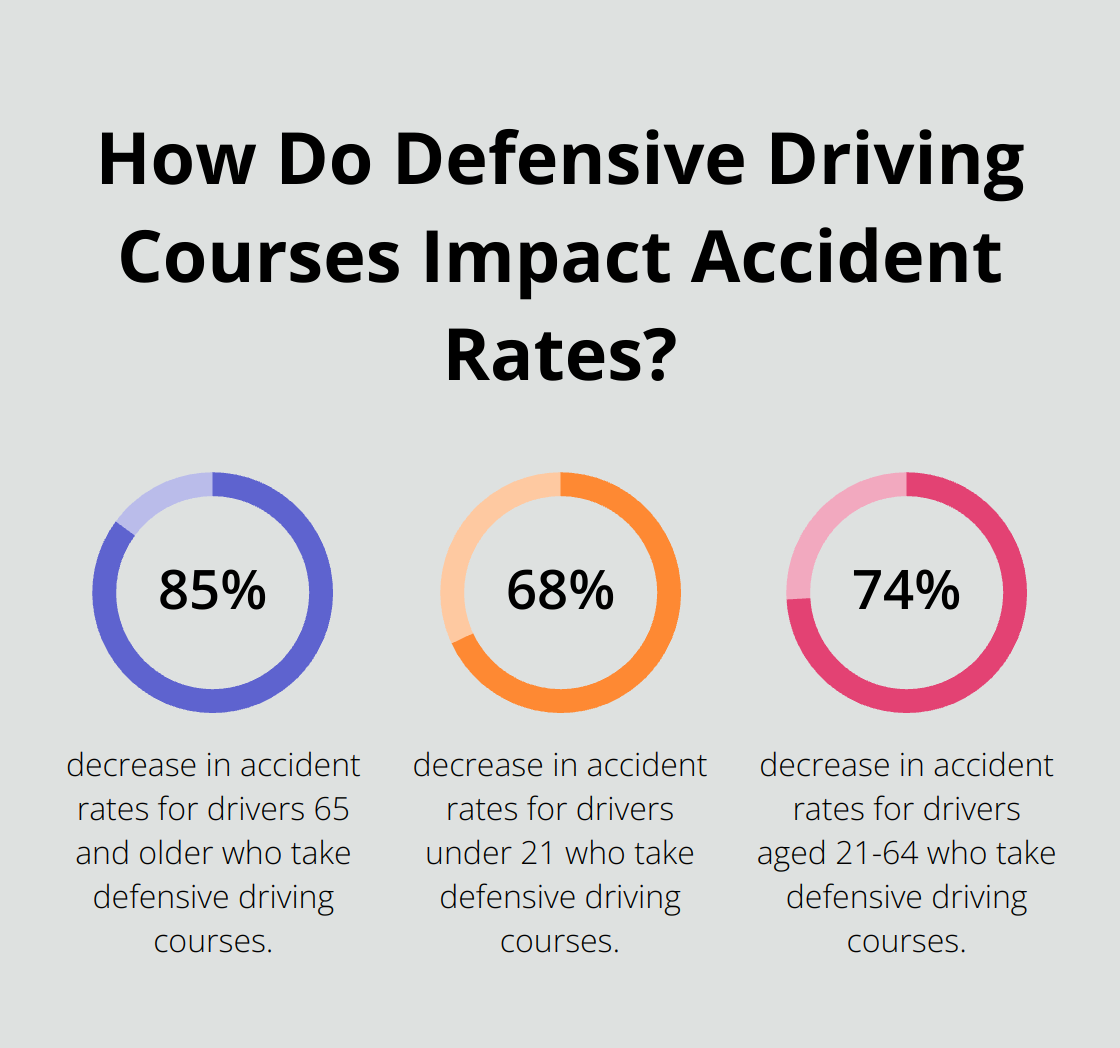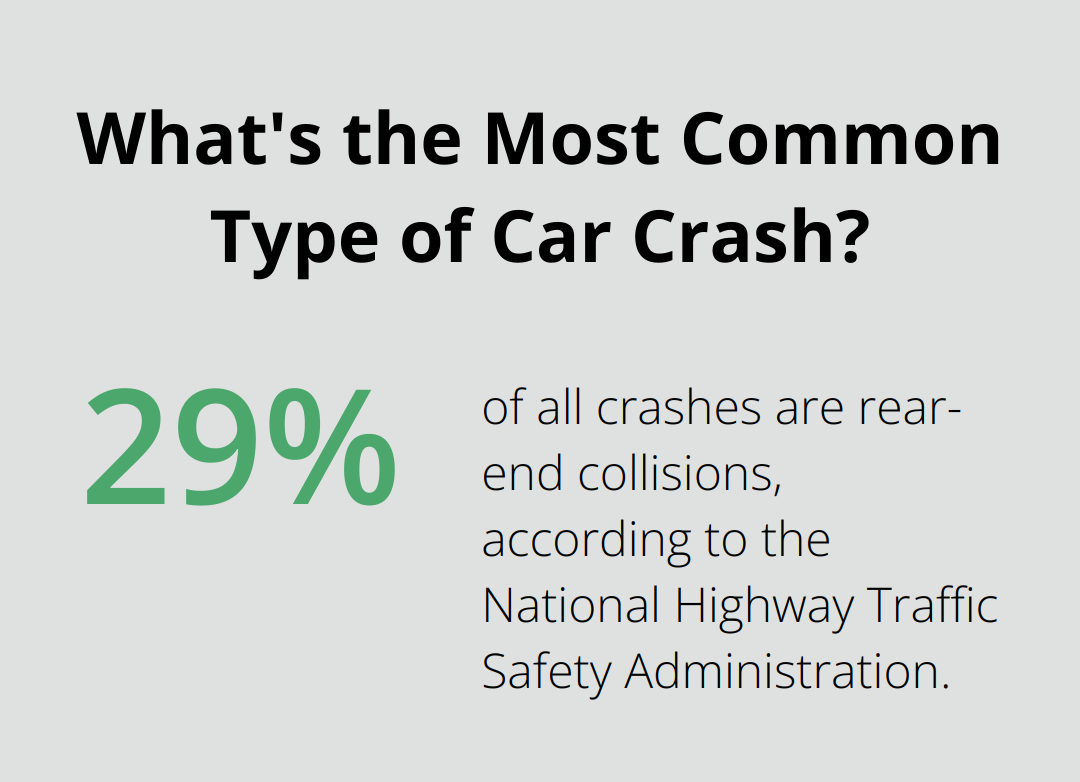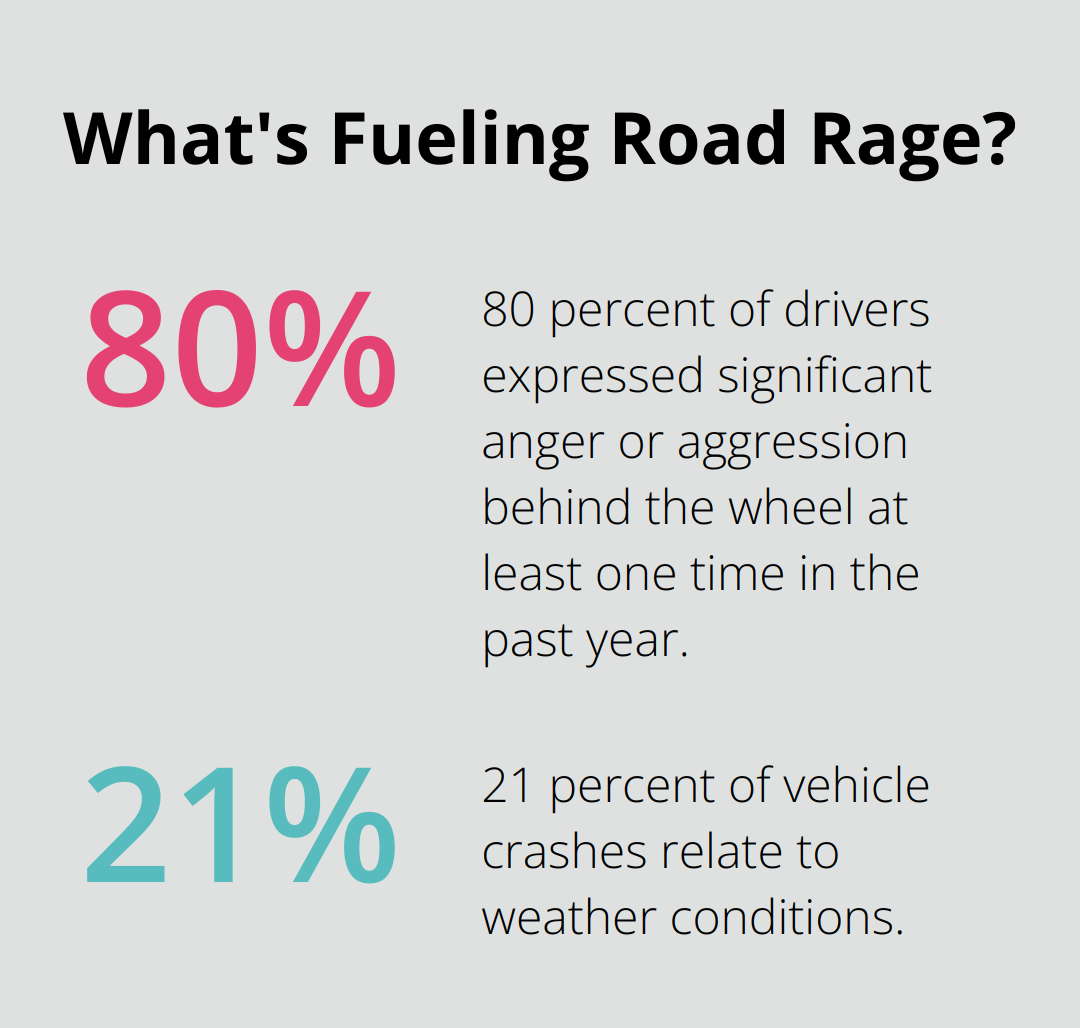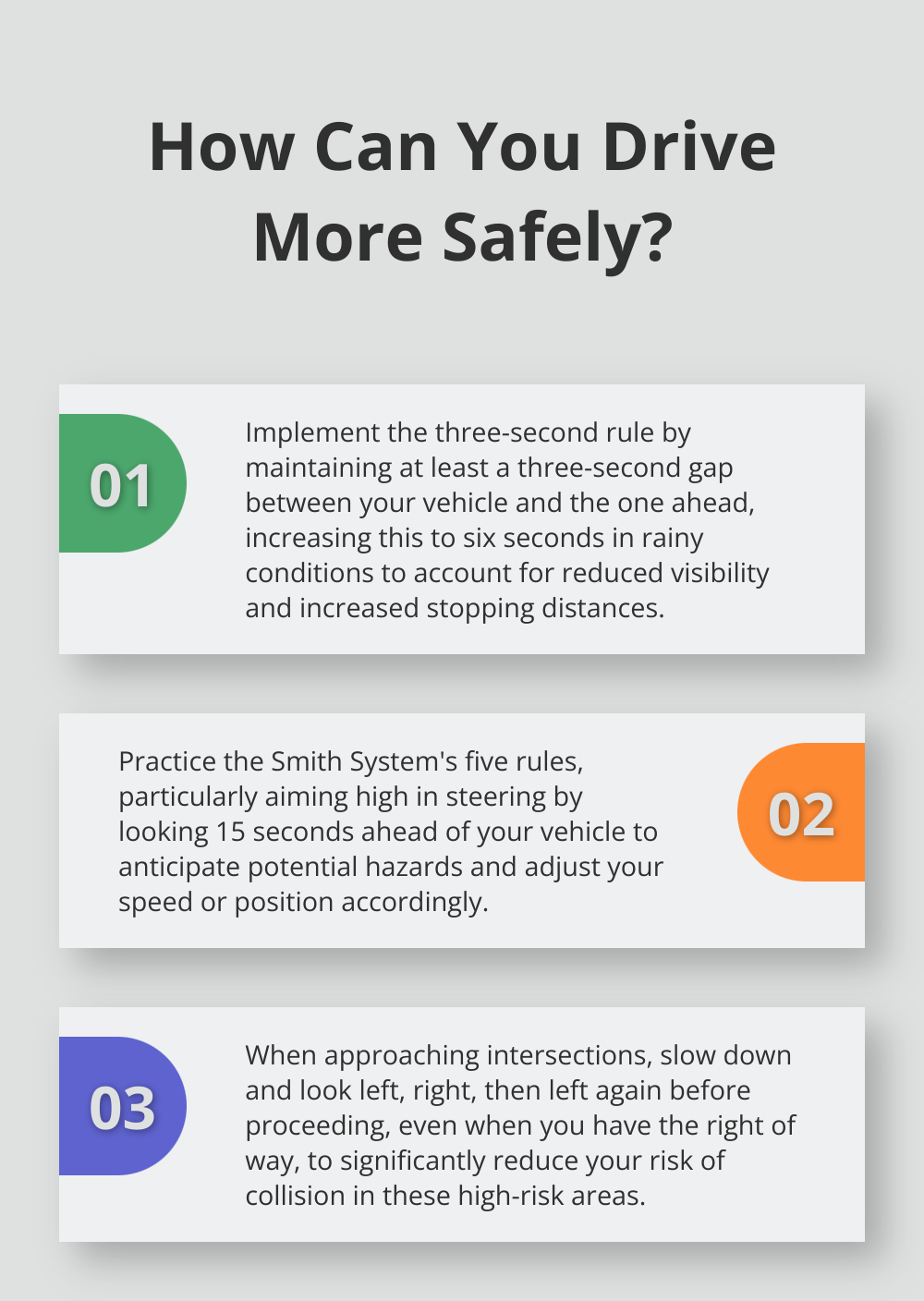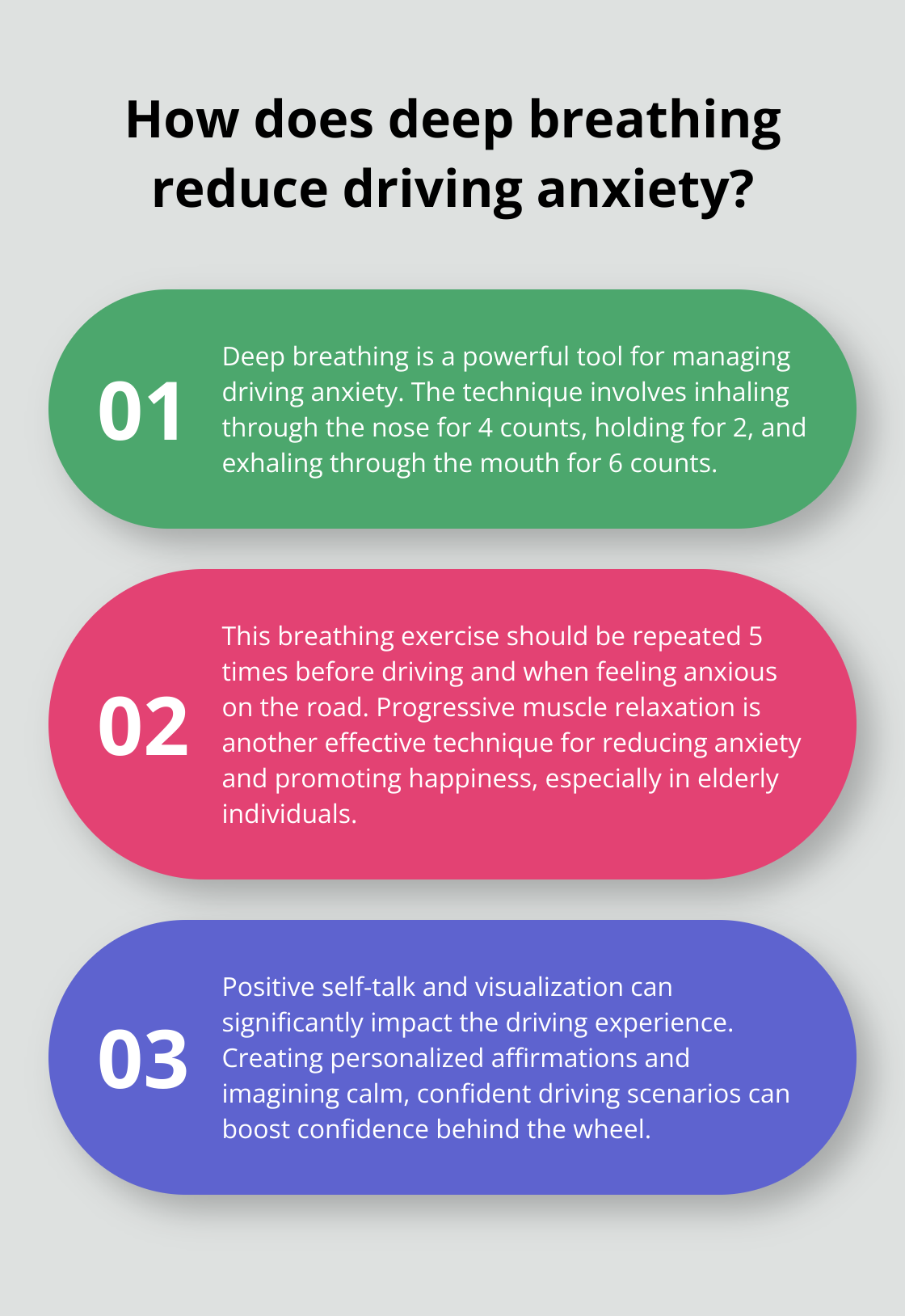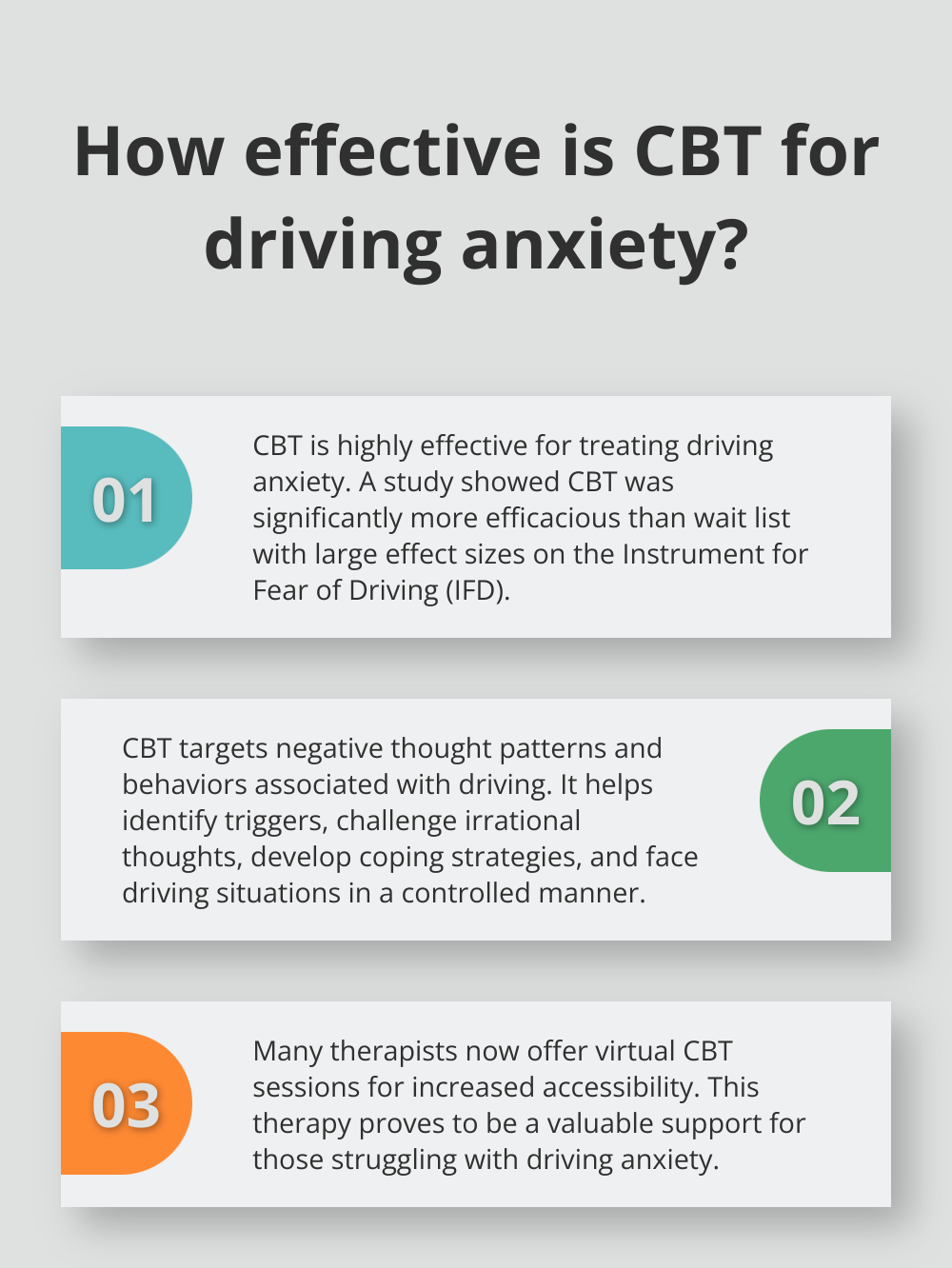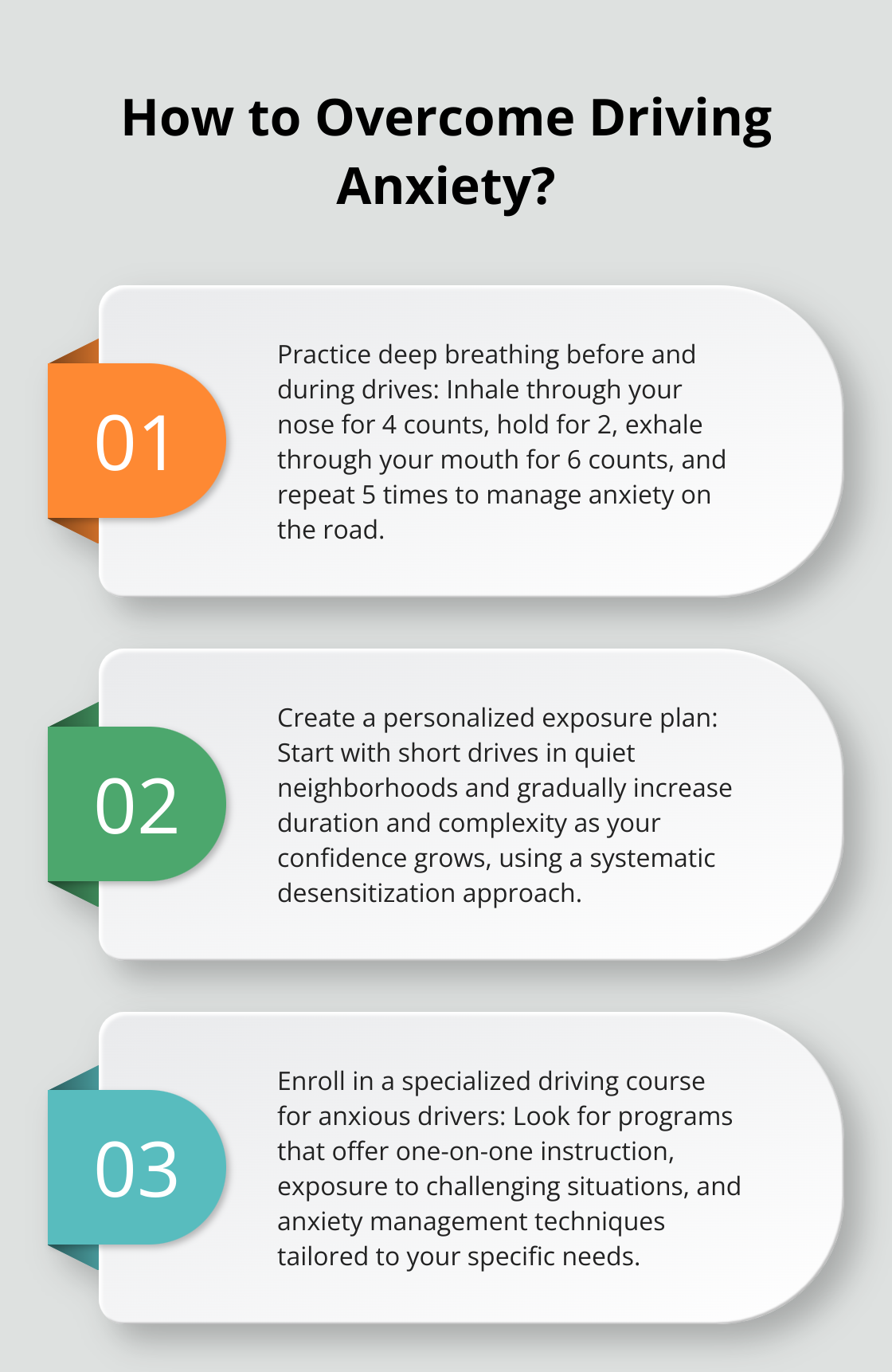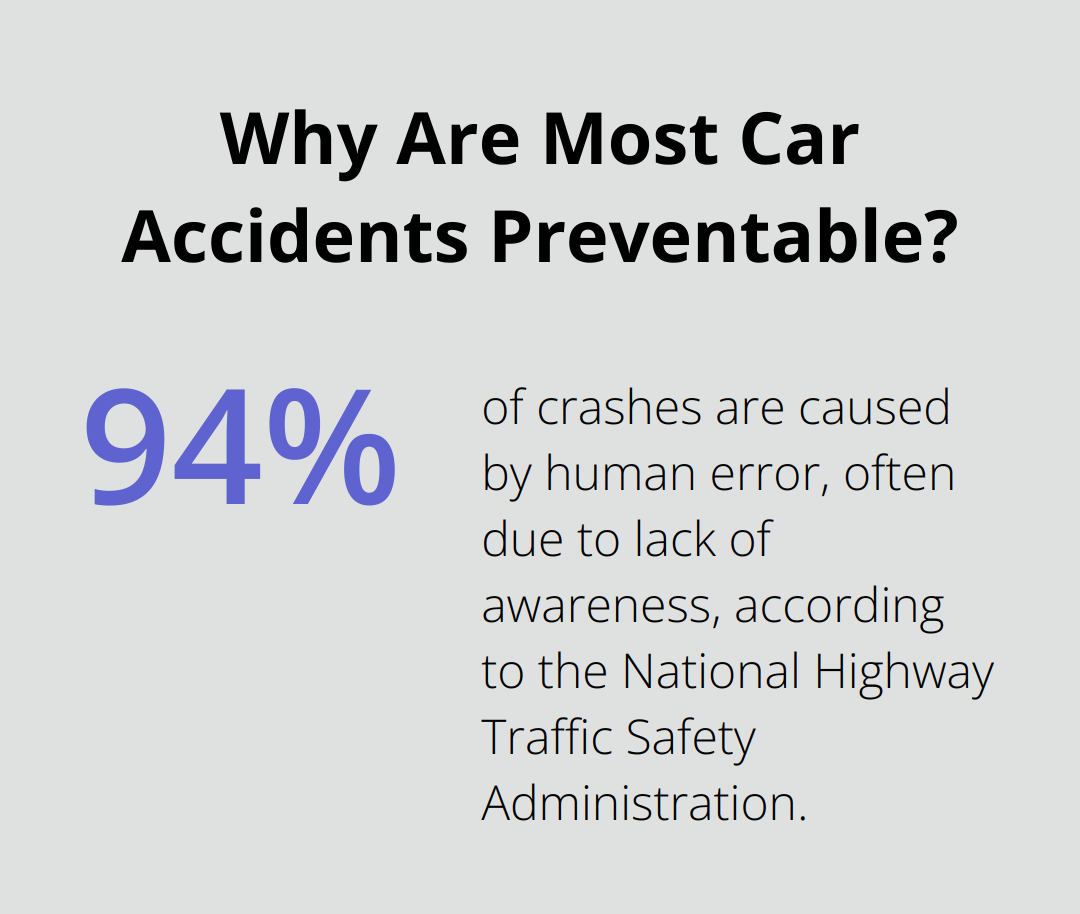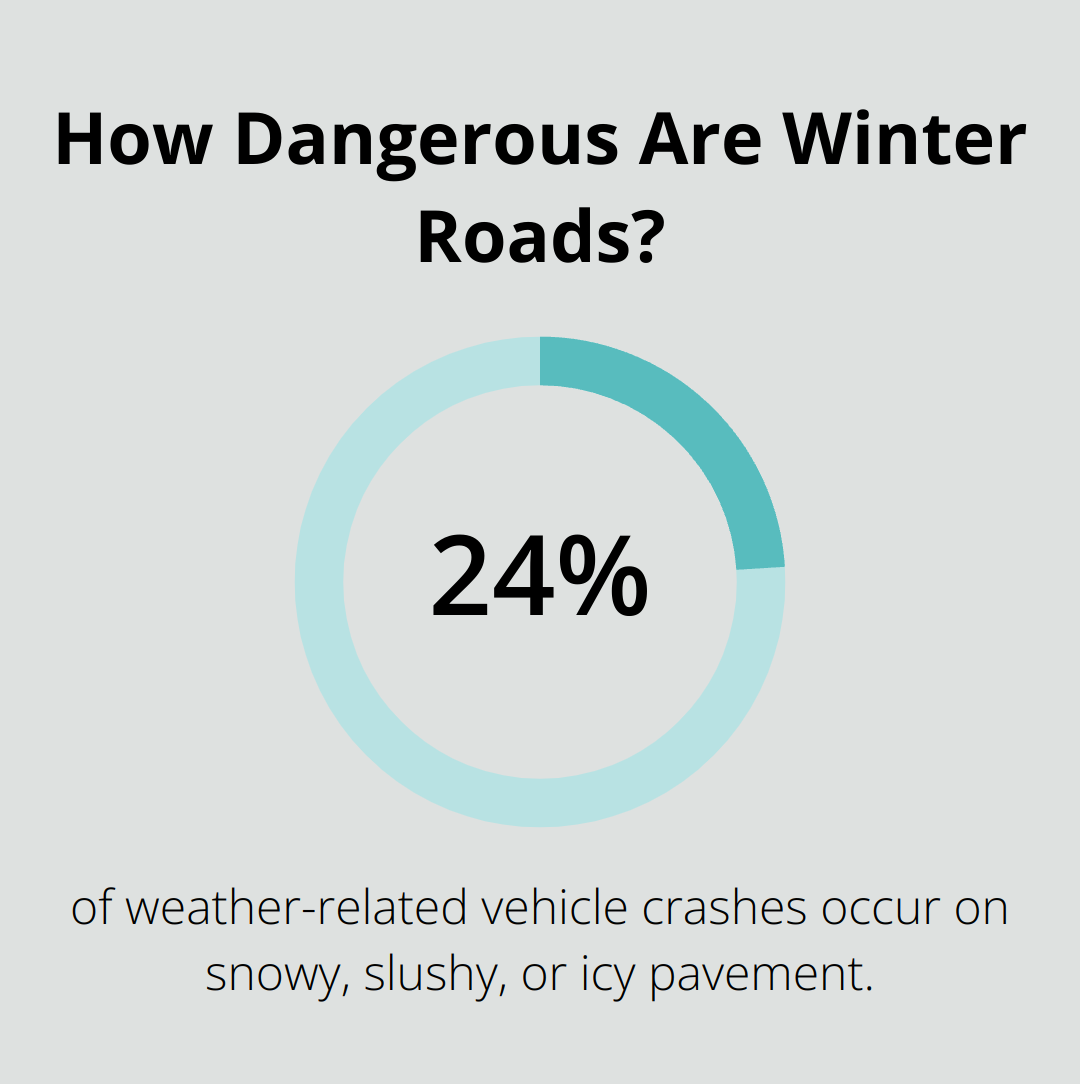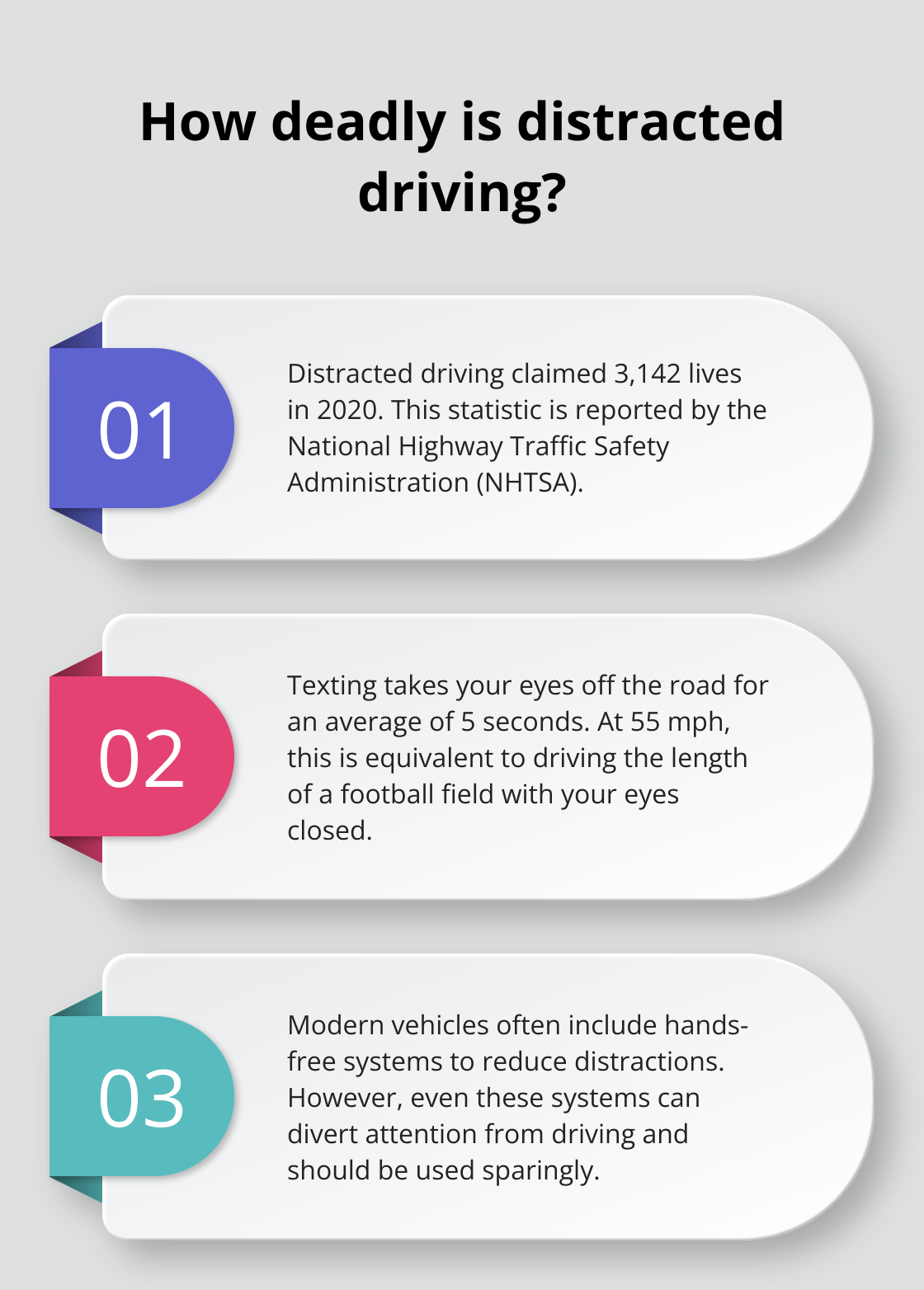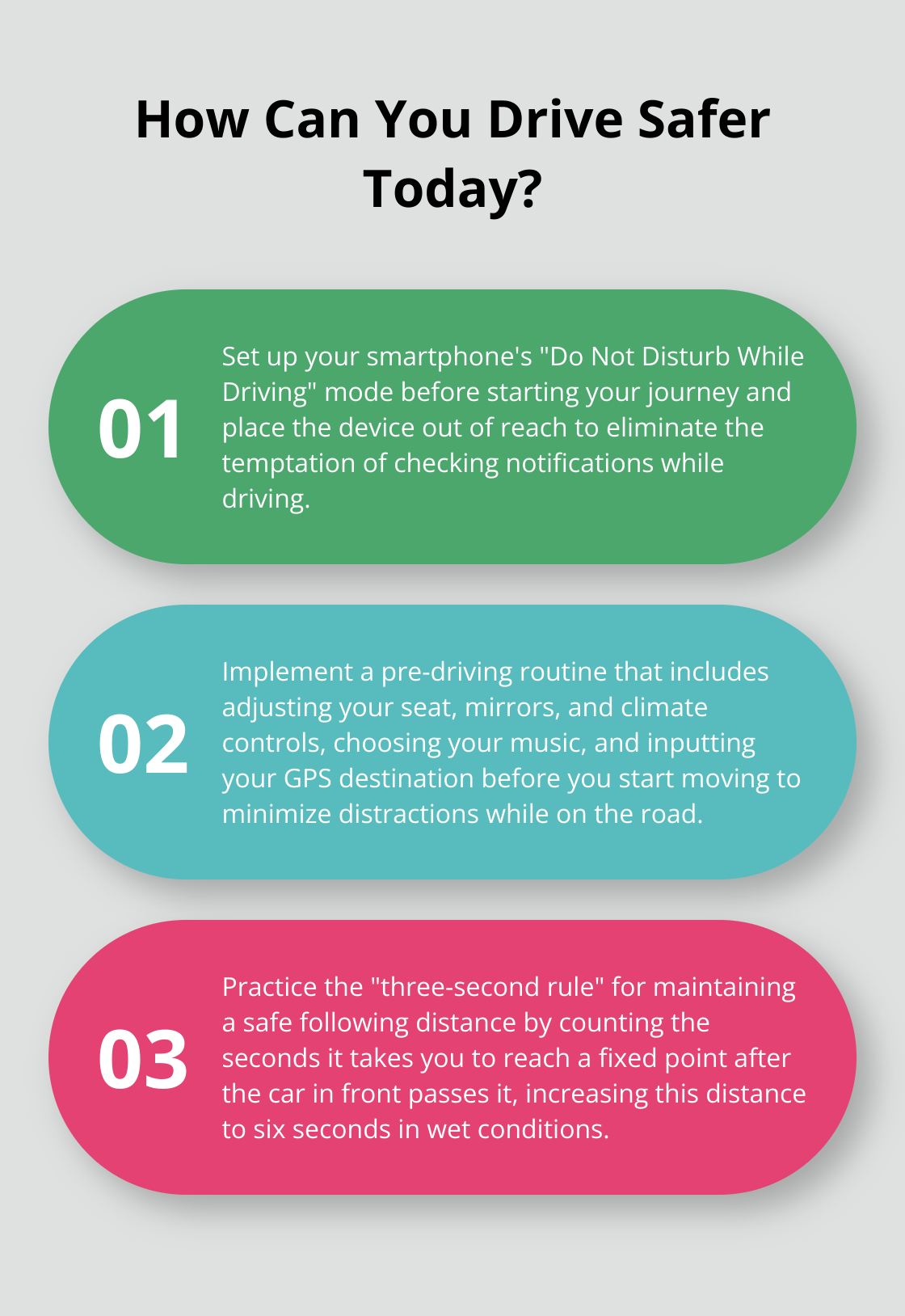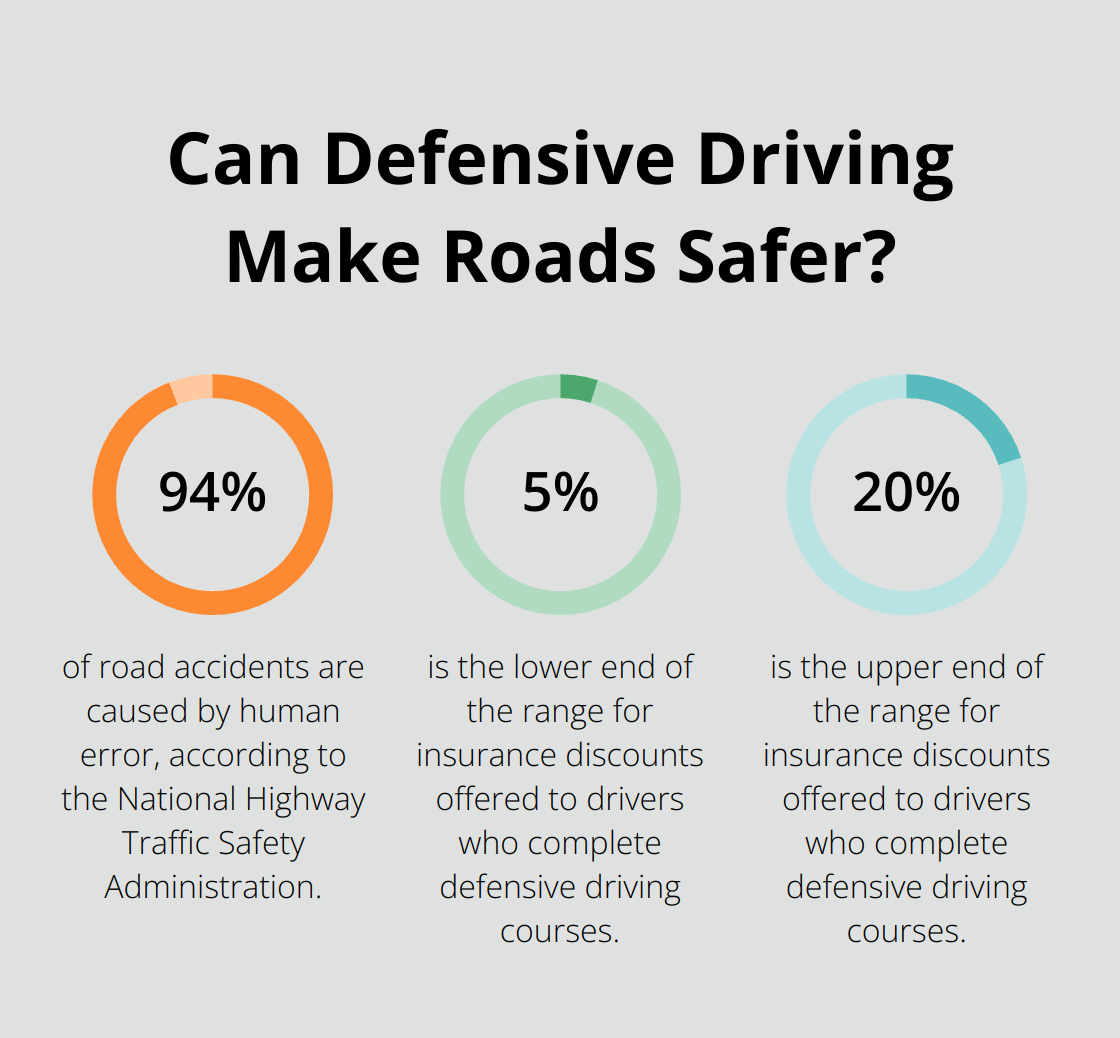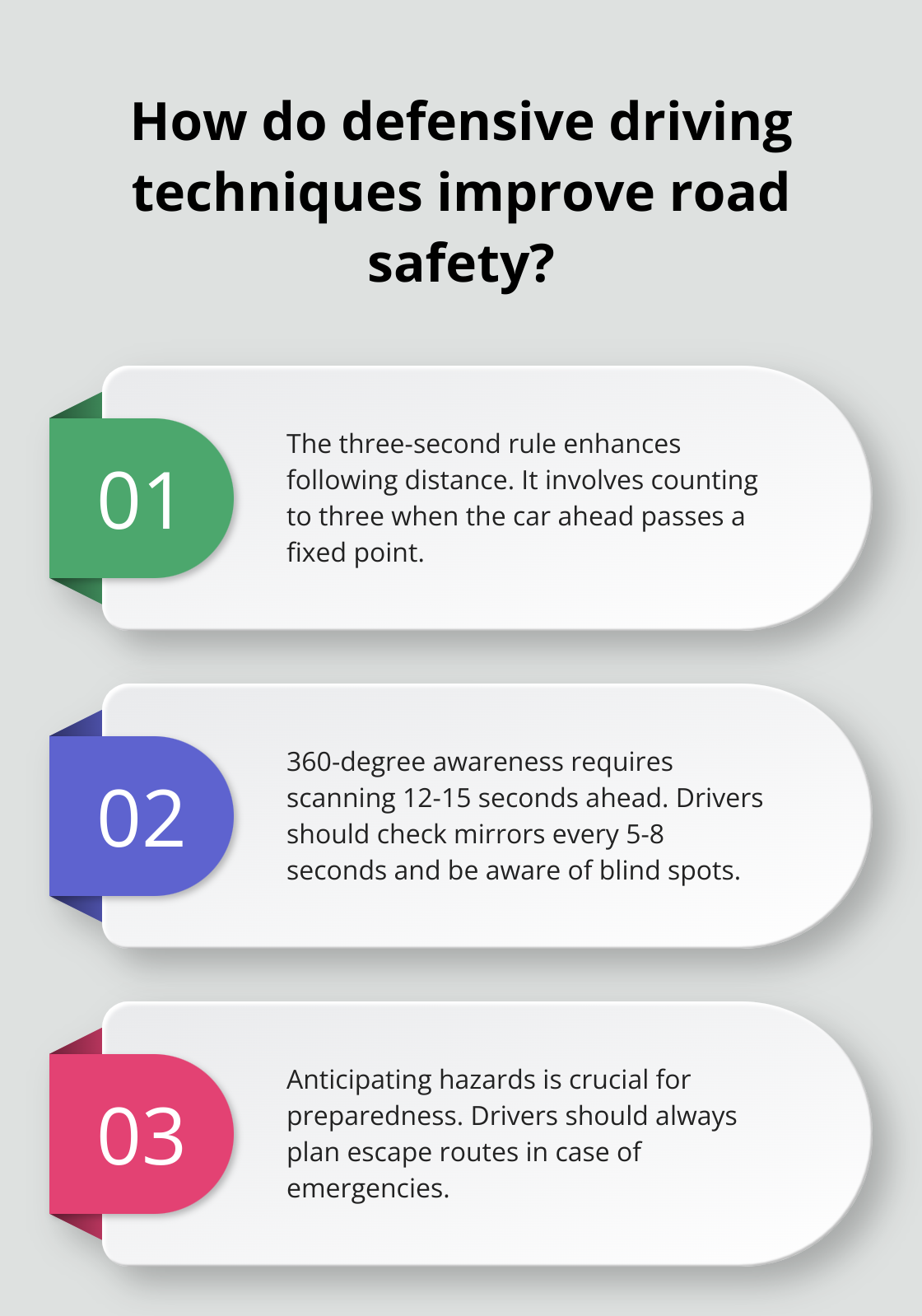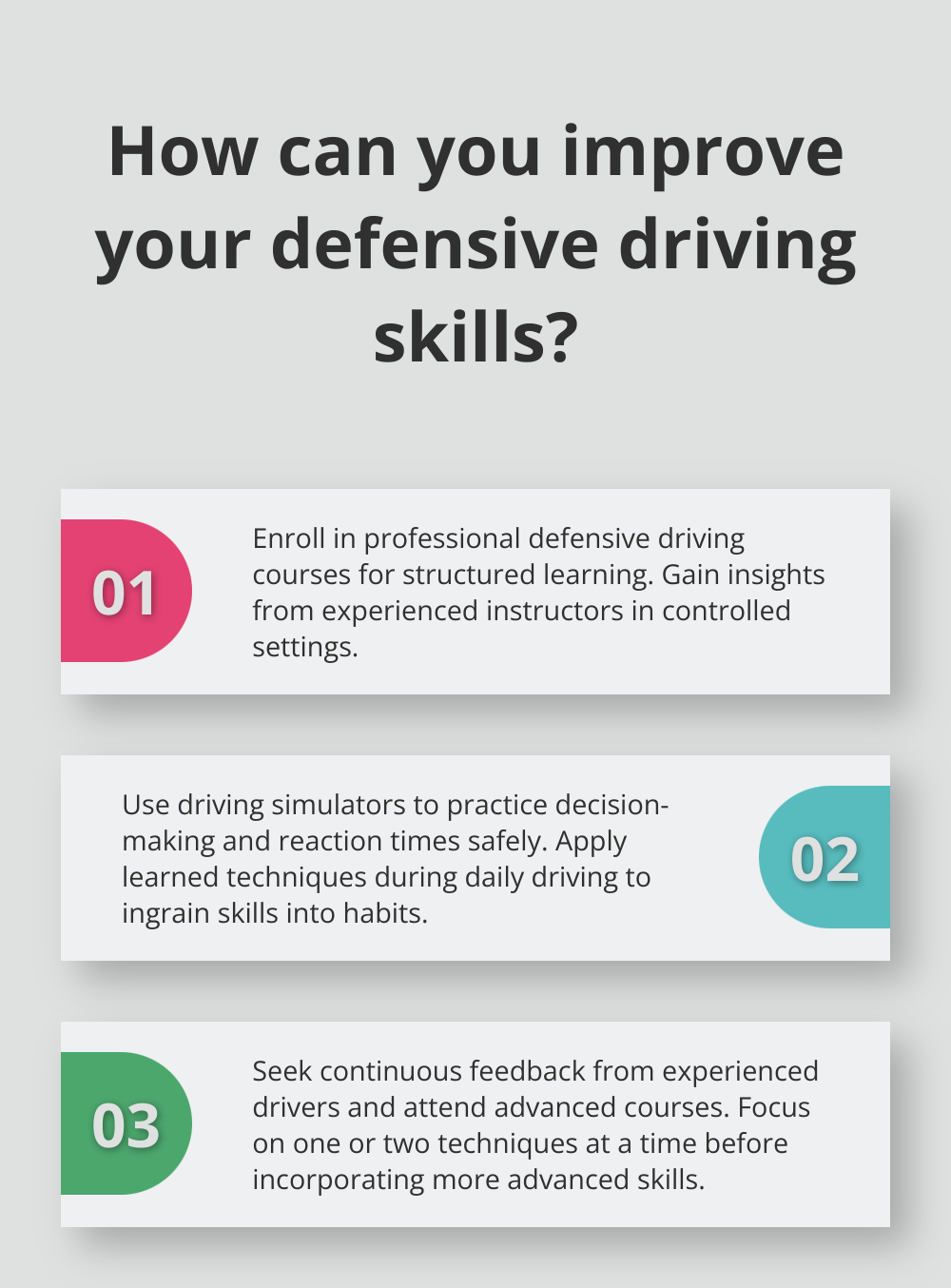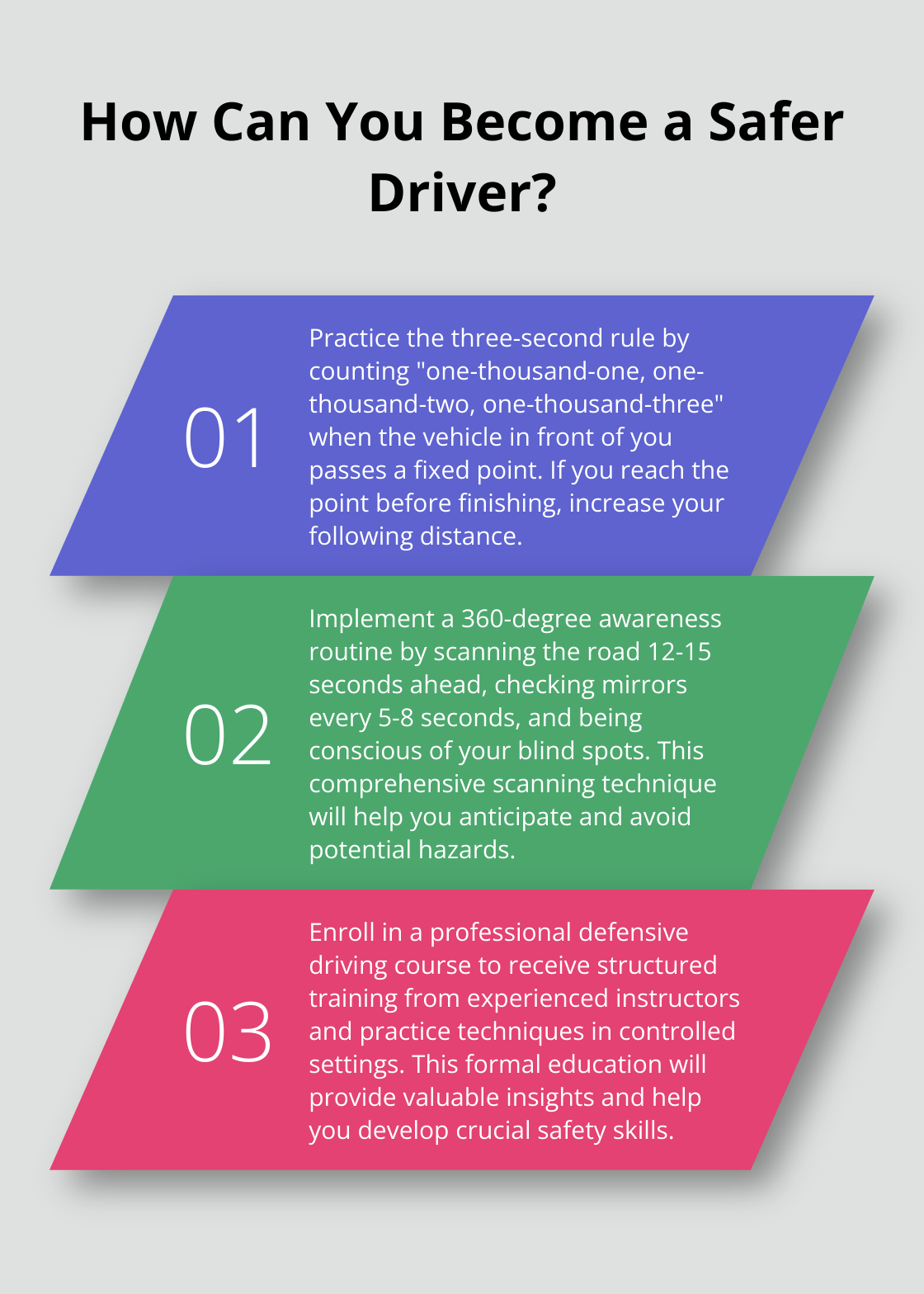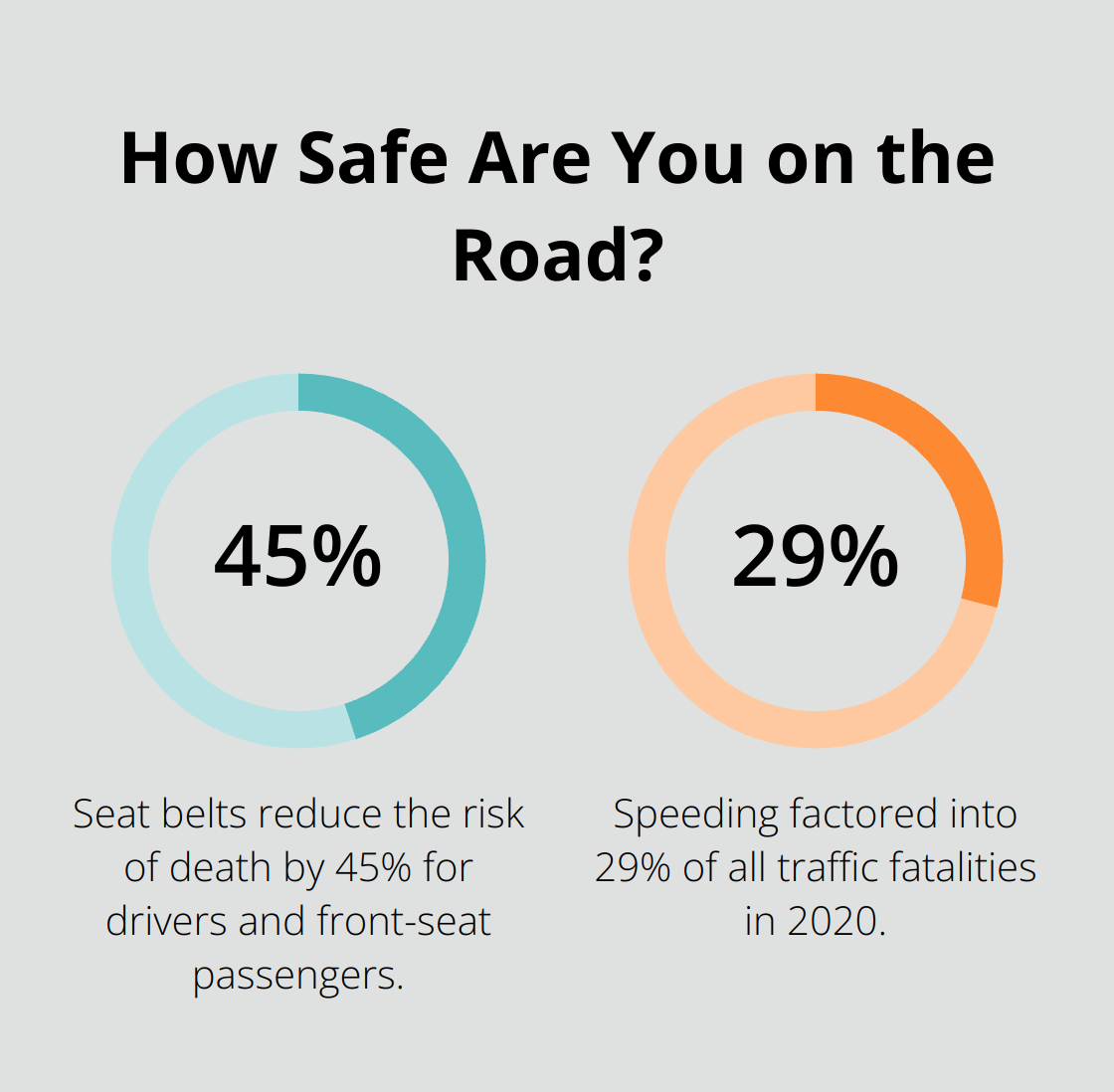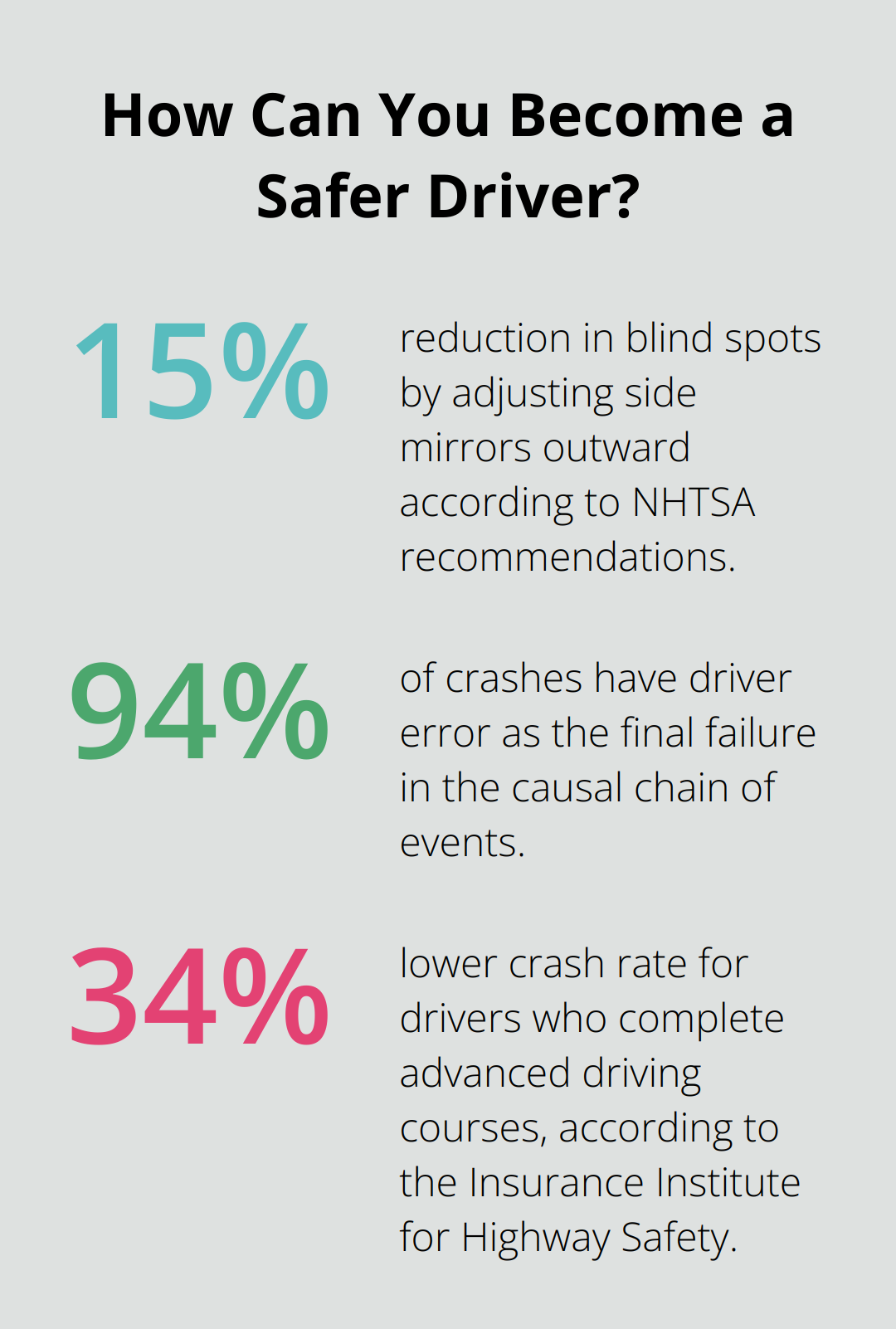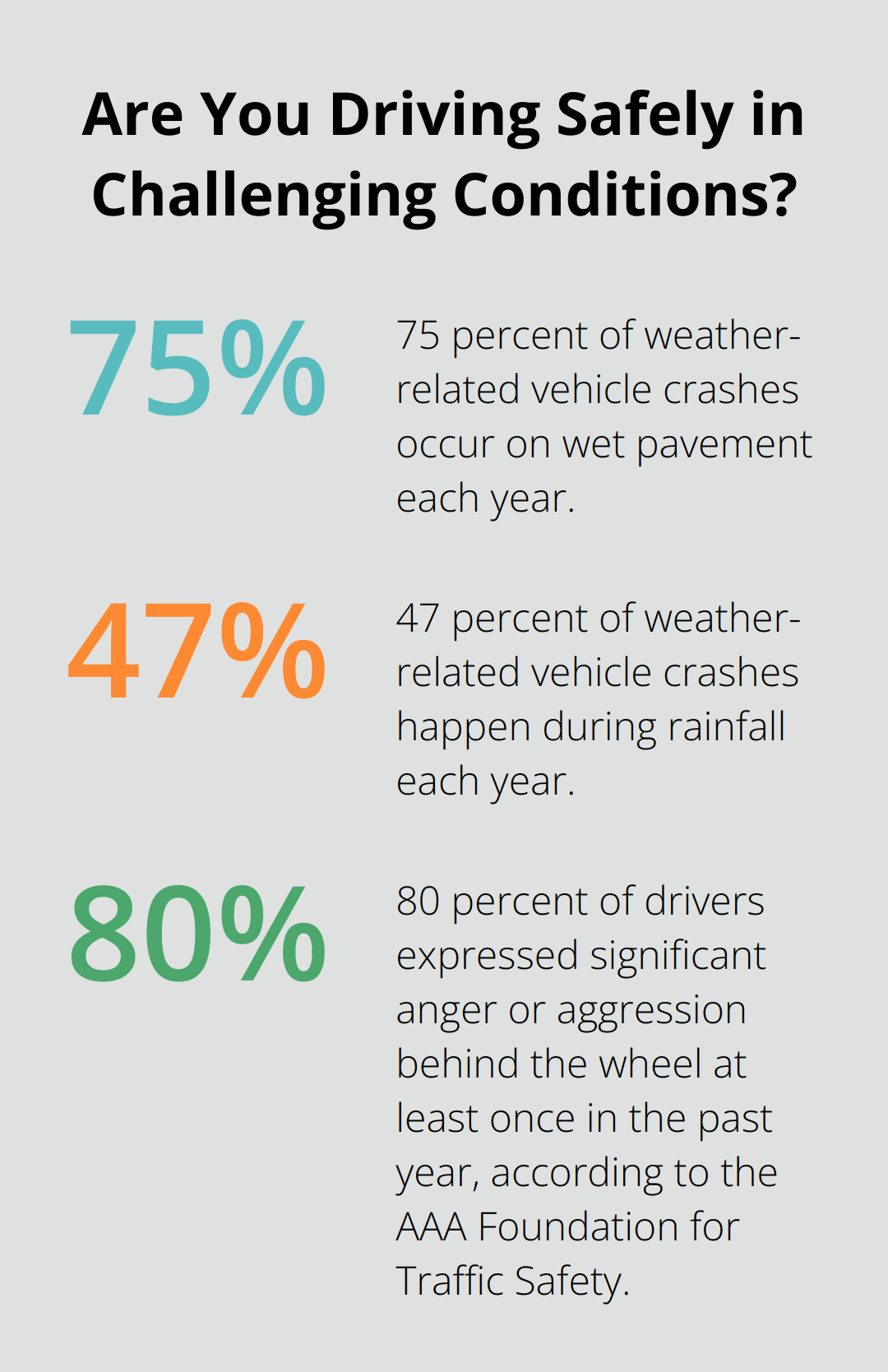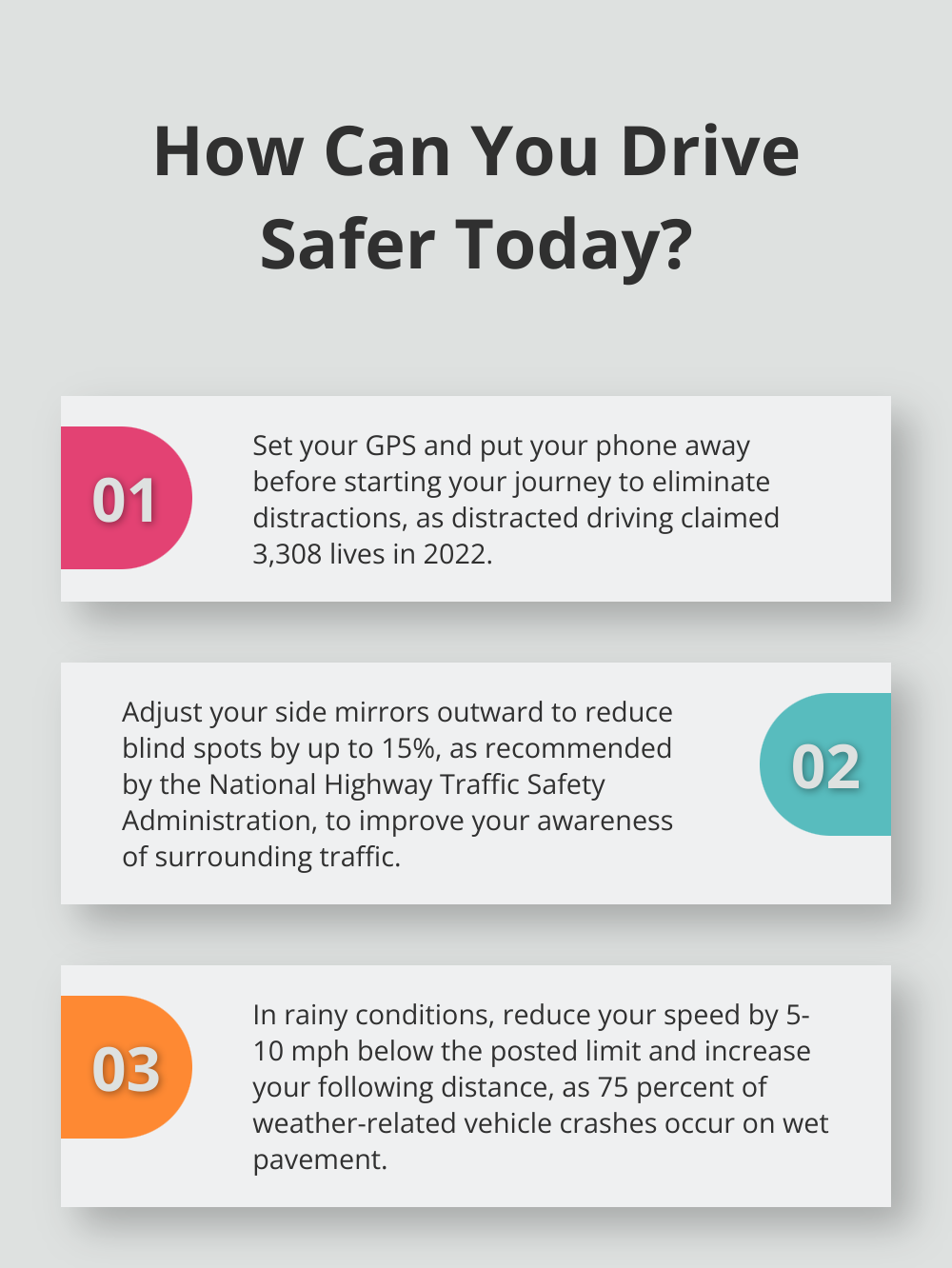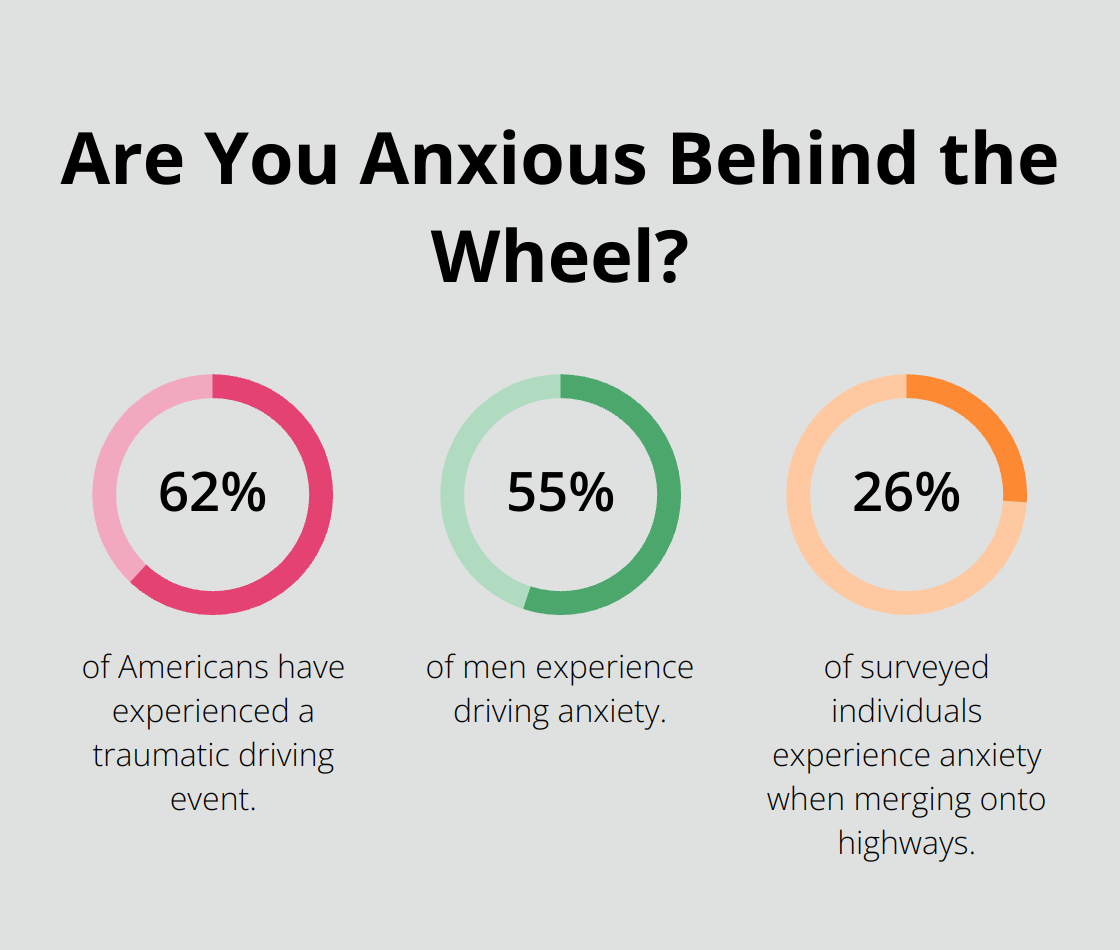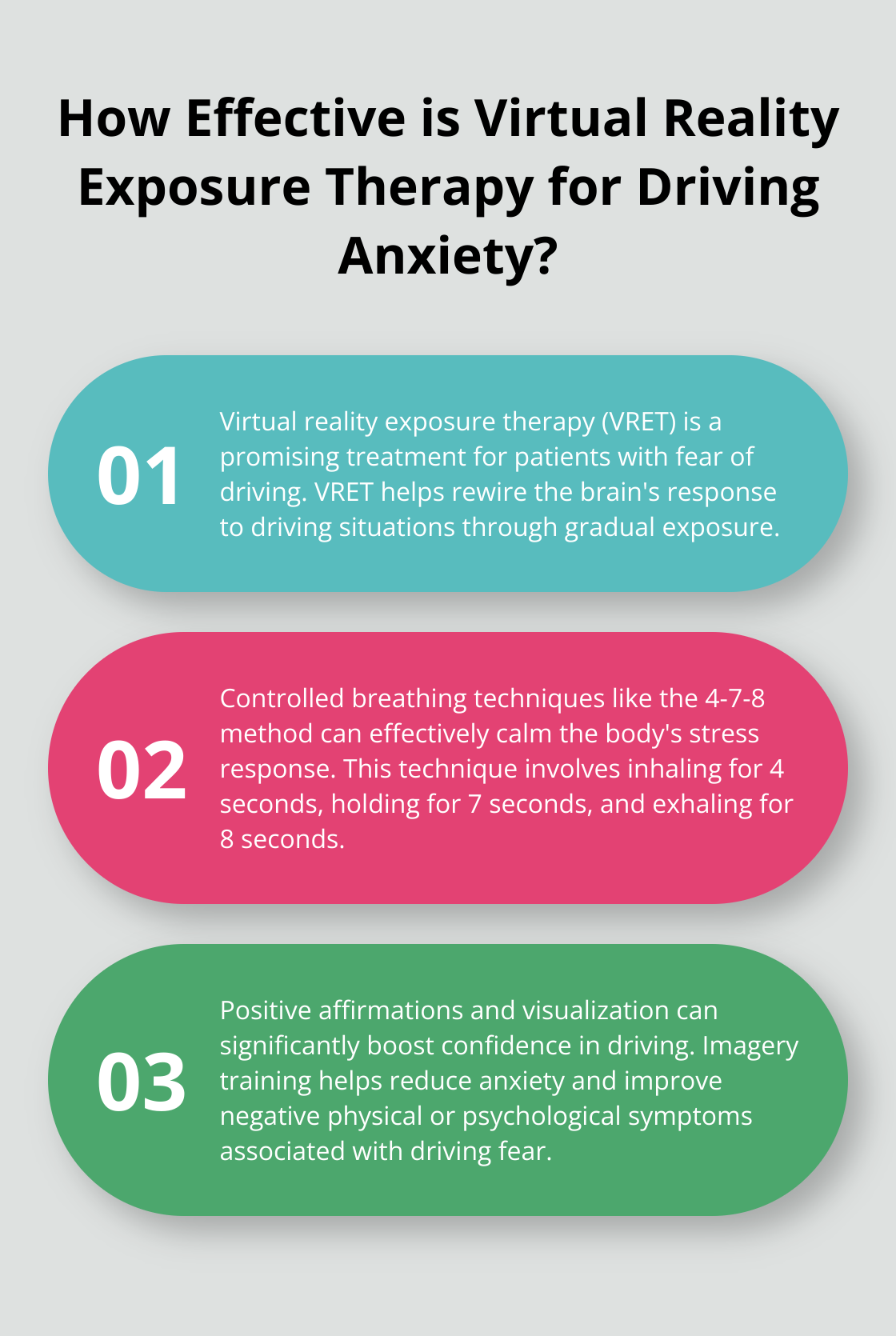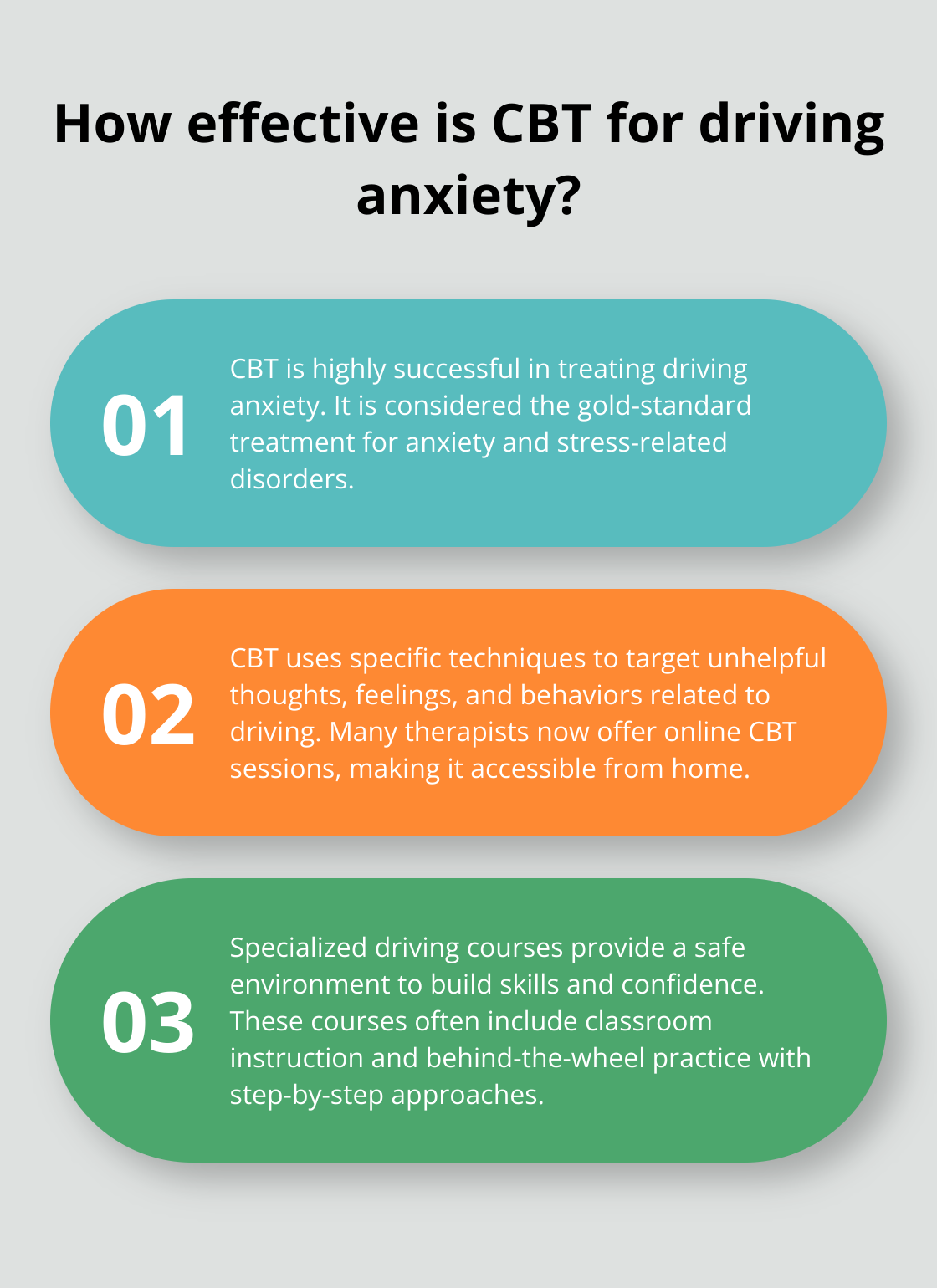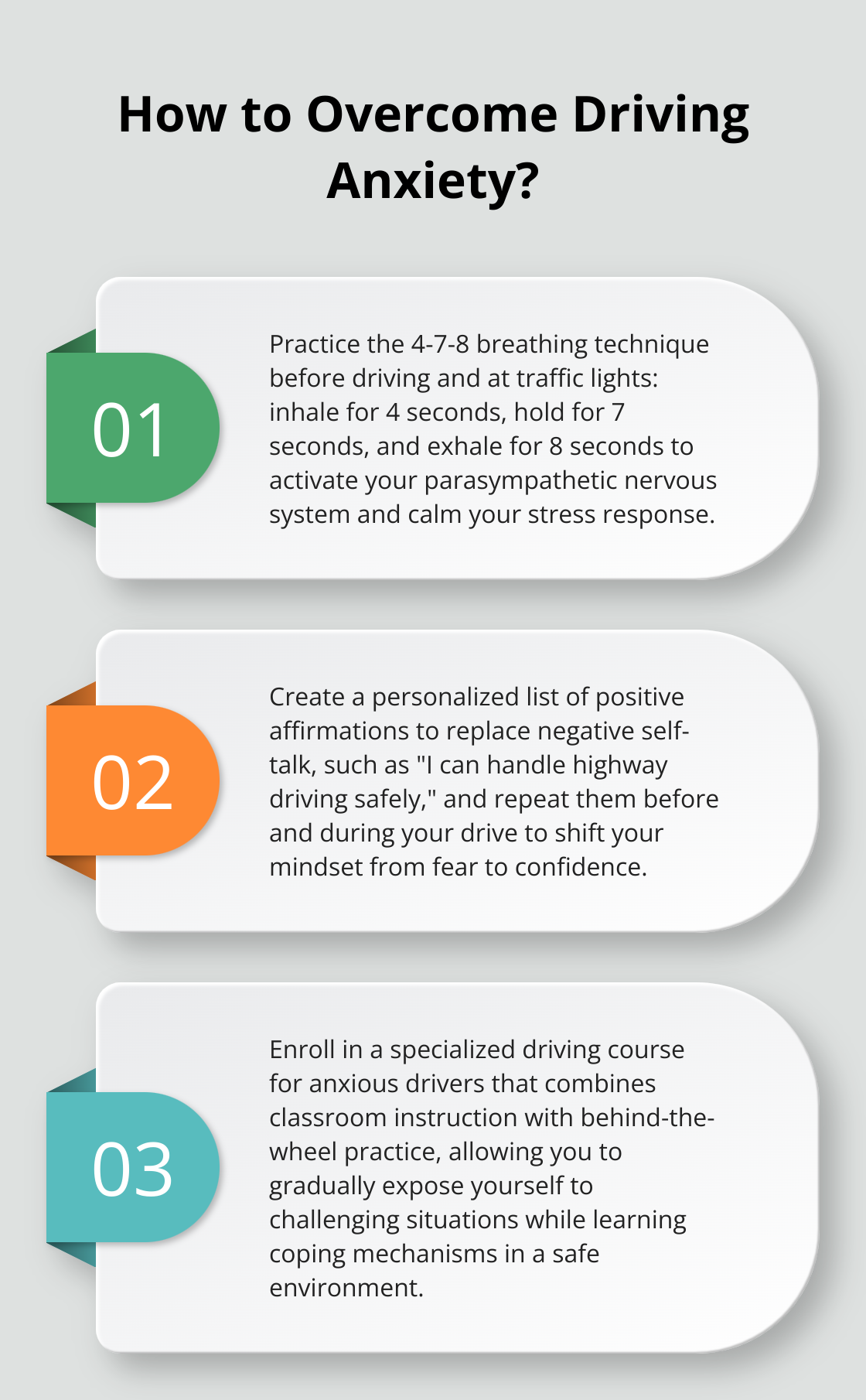How to Drive Safely: Essential Tips for New Drivers
At The Wiser Driver Driving School, we know that getting behind the wheel for the first time can be both exciting and nerve-wracking. That’s why we’ve compiled essential driving tips for new drivers to help you navigate the roads safely and confidently.
In this guide, we’ll cover everything from mastering the basics to handling challenging conditions, ensuring you’re well-prepared for your journey as a new driver.
How to Master Safe Driving Basics
Safe driving starts with mastering the fundamentals. We emphasize these core principles to help new drivers build a solid foundation for their journey on the road.
Seatbelt Safety: Your First Line of Defense
Buckling up is non-negotiable. Research indicates that seatbelts can decrease driver fatalities by 25% and front passenger fatalities by 28%. Make it a habit to fasten your seatbelt before you start the engine, and insist that all passengers do the same.
Proper Vehicle Setup for Optimal Control
Take a moment to adjust your mirrors and seat position before you hit the road. Proper mirror alignment eliminates blind spots, while the right seat position ensures you can reach all controls comfortably. Your hands should rest at the 9 and 3 o’clock positions on the steering wheel for maximum control.
Decoding the Road: Traffic Signs and Signals
Understanding and obeying traffic signs and signals is essential for safe driving. Familiarize yourself with common signs, their shapes, and colors. Red octagons always mean stop, while yellow diamonds indicate warnings. Pay close attention to speed limit signs, as speeding is a significant factor in fatal crashes involving young drivers.
The Three-Second Rule: Maintaining Safe Distance
Keeping a safe following distance is vital for accident prevention. Use the three-second rule: choose a fixed point ahead and count the seconds it takes for you to reach that point after the car in front of you passes it. If it’s less than three seconds, increase your distance. In adverse weather conditions, double this to six seconds.
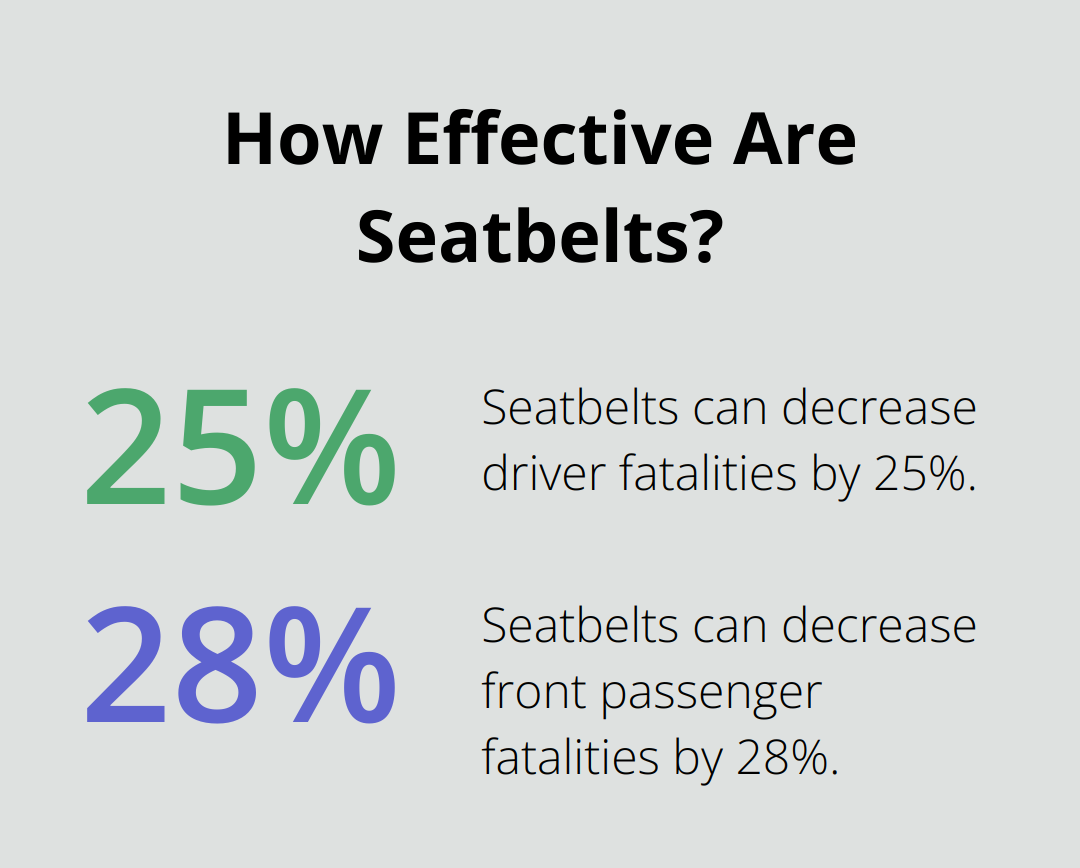
These basics form the cornerstone of safe driving. Consistent application of these principles will set you on the path to becoming a confident and responsible driver. As you progress in your driving journey, you’ll need to learn how to handle various distractions on the road. Let’s explore this critical aspect of safe driving in the next section.
How to Stay Focused Behind the Wheel
Distracted driving causes many accidents, especially for new drivers. We emphasize the importance of maintaining focus while driving. Here are practical strategies to help you avoid distractions and stay safe on the road.
Silence Your Phone
Your smartphone distracts you the most in your car. Using a cellphone while driving increases crash risk. We recommend you put your phone on silent and store it out of reach. If you need to use your phone for navigation, set up your route before you start driving and use a hands-free mount.
Manage Passenger Interactions
Friends can make car rides more enjoyable, but they can also distract you significantly. If you’re a new driver, limit the number of passengers in your car. When you do have passengers, ask them politely to keep conversation to a minimum during challenging driving situations (such as merging onto a highway or navigating through heavy traffic).
Prepare Before You Drive
You can eliminate many distractions with proper preparation. Before you start your journey, adjust your mirrors, set up your GPS, choose your music playlist, and ensure you’ve eaten and hydrated. This pre-drive routine not only reduces distractions but also helps you feel more comfortable and in control behind the wheel.
Avoid Eating and Drinking
Eating or drinking while driving takes your hands off the wheel and your eyes off the road. It’s best to finish your meal or drink before you start driving. If you must eat or drink during a long trip, pull over to a safe location (like a rest stop or parking lot) to do so.
Stay Alert and Rested
Drowsy driving can be as dangerous as drunk driving. Make sure you get enough sleep before a long drive. If you feel tired while driving, don’t push yourself. Pull over to a safe location and take a short nap or switch drivers if possible.
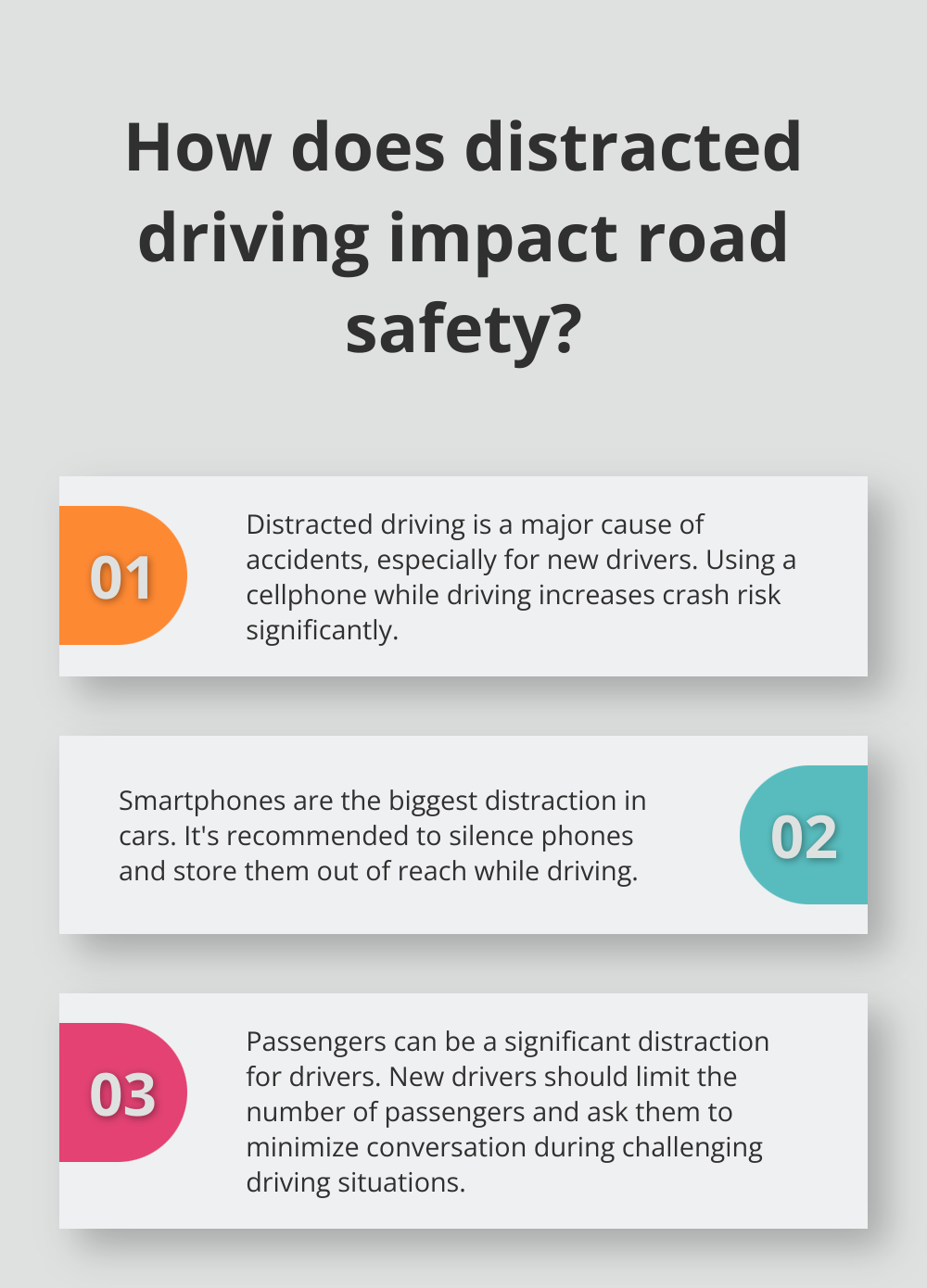
Now that you know how to stay focused behind the wheel, let’s move on to handling challenging driving conditions. These situations can test even experienced drivers, so it’s essential for new drivers to be prepared.
How to Handle Challenging Road Conditions
Wet and Snowy Roads
Wet and snowy roads increase accident risks. On average, there are over 5,891,000 vehicle crashes each year, with the vast majority of weather-related crashes occurring on wet pavement. When you drive in wet conditions, reduce your speed by at least 5-10 mph below the speed limit. This allows more reaction time to sudden changes.
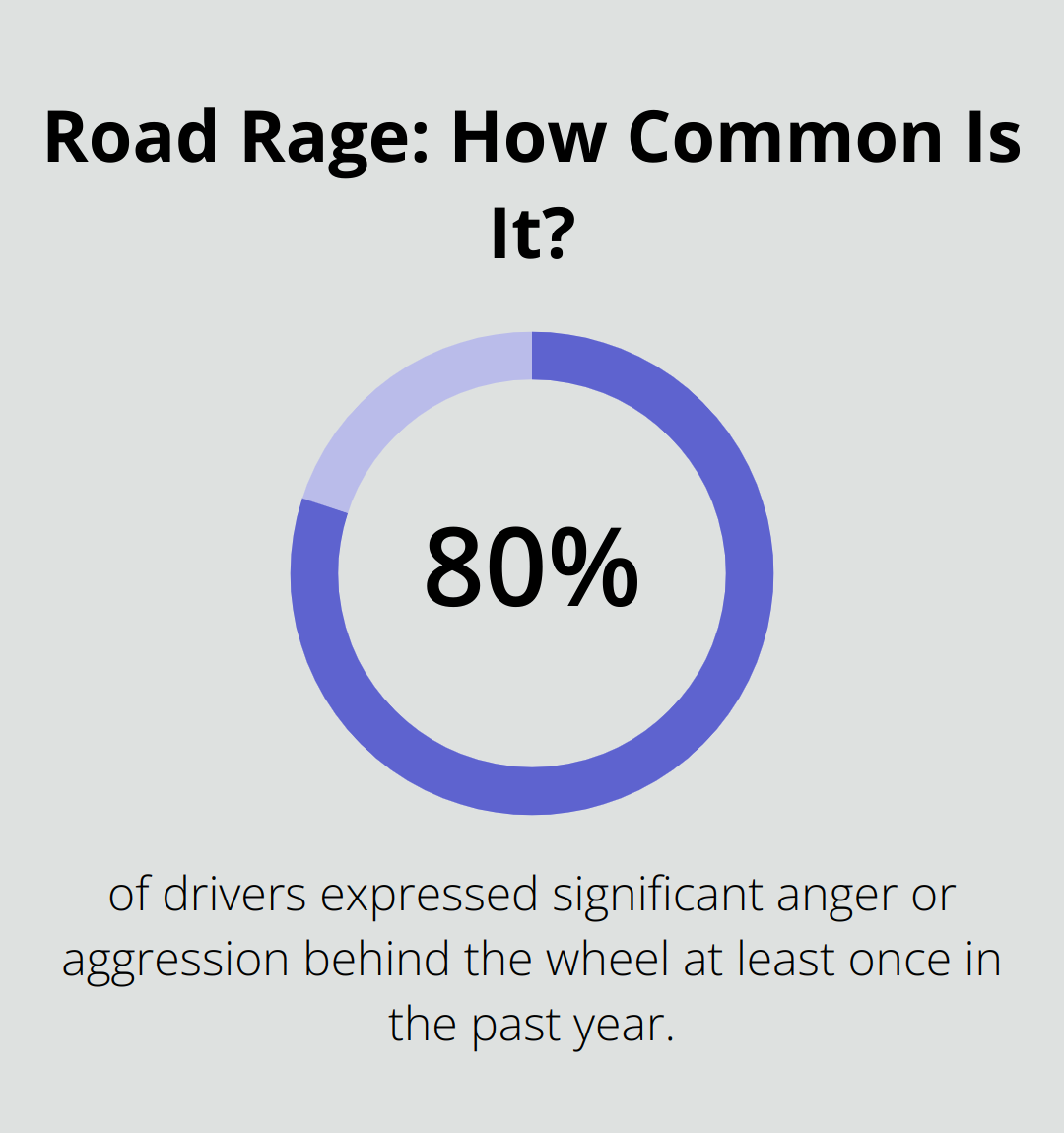
In snow, keep an 8-10 second following distance. If your vehicle skids, steer towards your intended direction and avoid sudden brakes. Bridges and overpasses freeze first (exercise extra caution in these areas).
Heavy Traffic Navigation
Heavy traffic demands patience and alertness. Keep a consistent speed to avoid unnecessary braking and accelerating, which can worsen traffic jams. Use turn signals early when changing lanes, and always check your blind spots.
The number of hours per commuter lost to traffic delay has nearly tripled, climbing to 54 hours a year. To reduce stress, plan your route ahead and consider traffic apps to find less congested paths.
Aggressive Driver Encounters
Aggressive drivers can unnerve new drivers. The AAA Foundation for Traffic Safety reports that nearly 80% of drivers expressed significant anger or aggression behind the wheel at least once in the past year.
If you meet an aggressive driver, don’t engage. Avoid eye contact and ignore provocations. If you feel threatened, drive to the nearest police station or busy public area (never exit your vehicle to confront an aggressive driver).
Night Driving Safety
Night driving challenges drivers with reduced visibility. The National Safety Council states that the risk of a fatal crash triples at night. To stay safe, keep your headlights clean and properly aimed. Use high beams when appropriate, but dim them for oncoming traffic.
Fatigue poses a major risk in night driving. If drowsiness sets in, find a safe place to rest. Even a 20-minute nap can significantly improve your alertness.
Final Thoughts
Safe driving requires constant attention and practice. We provided essential driving tips for new drivers, covering everything from basic skills to handling challenging road conditions. These tips will help you become a more confident and responsible driver on the road.

As you gain experience, you must continue to improve your driving skills. Stay updated on traffic laws and remain open to feedback from experienced drivers. The road can be unpredictable, so you need to stay vigilant and adaptable in various situations.
For comprehensive driver education and hands-on experience, we invite you to enroll in The Wiser Driver’s programs. Our experienced instructors will help you become a safer, more skilled driver. We offer state-required courses, personalized lessons, and convenient road testing services to support you on your journey (with benefits like free online driver education and flexible scheduling).



